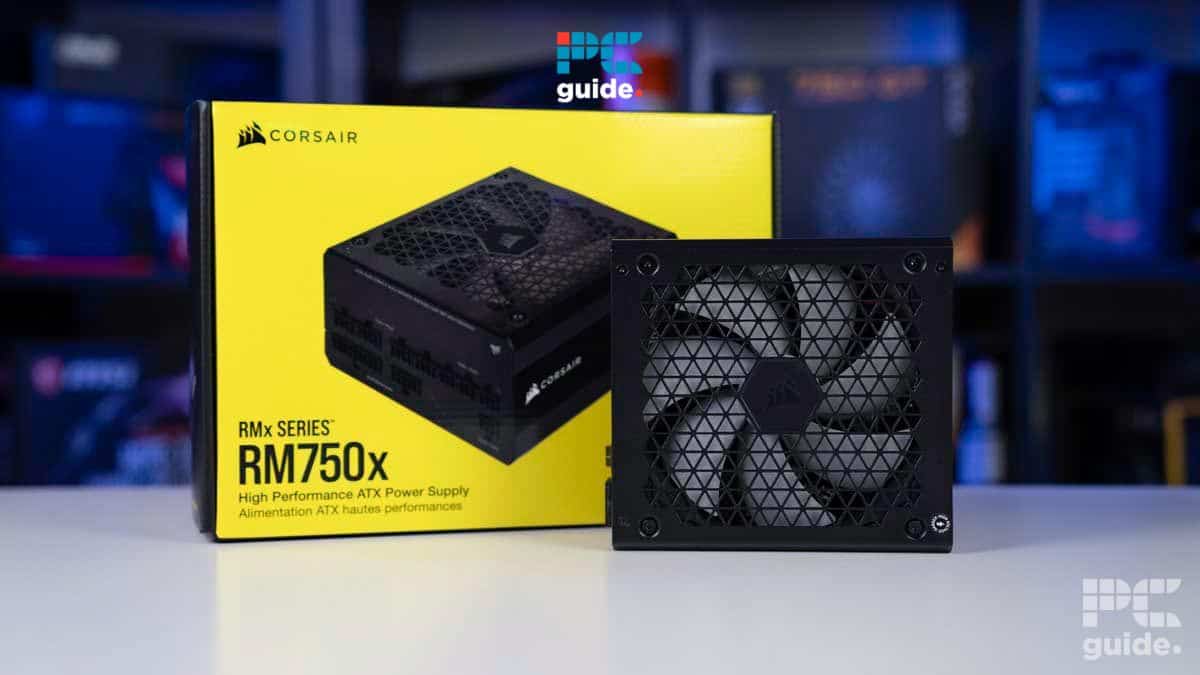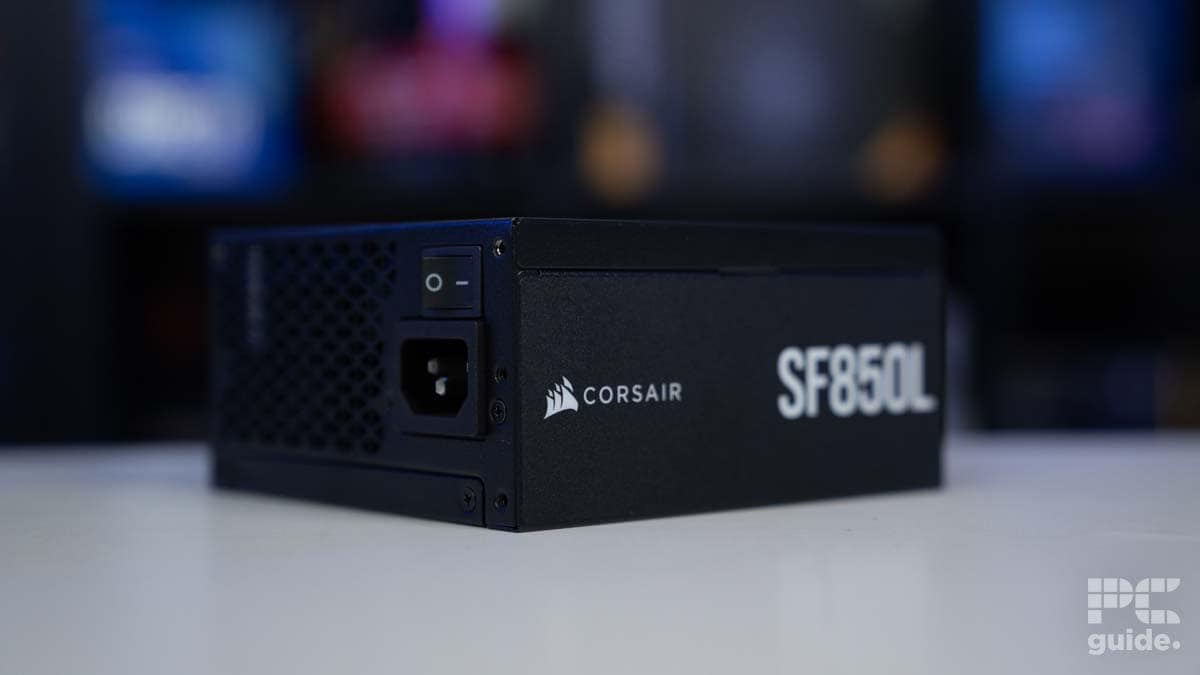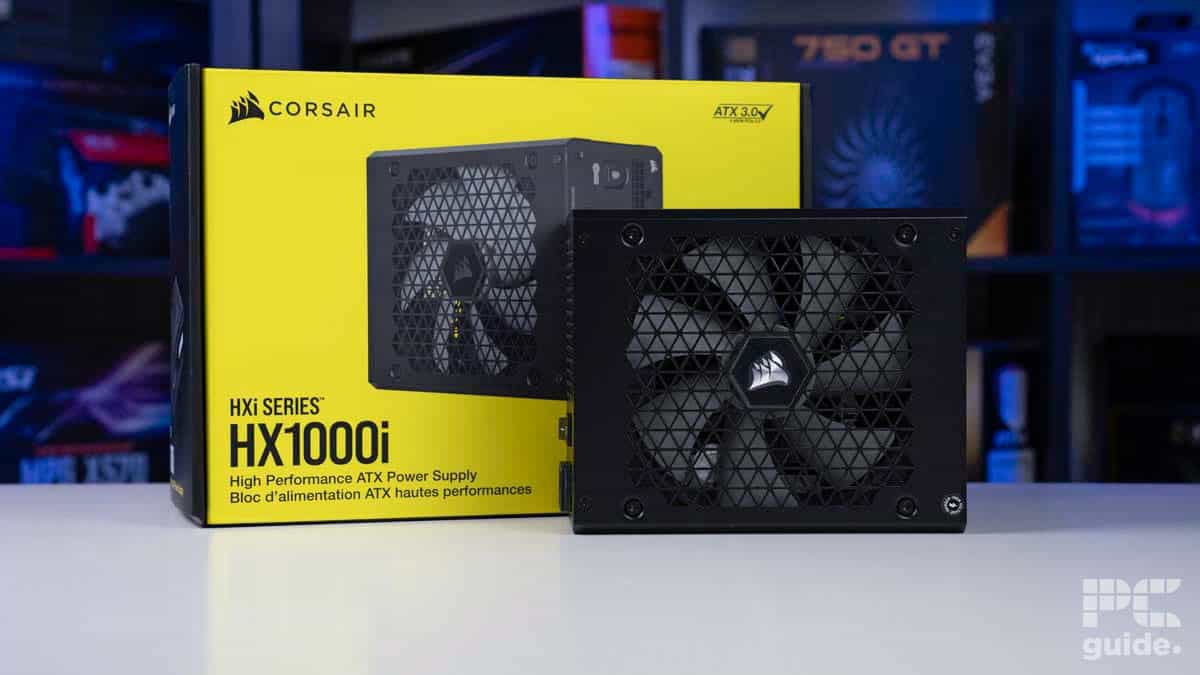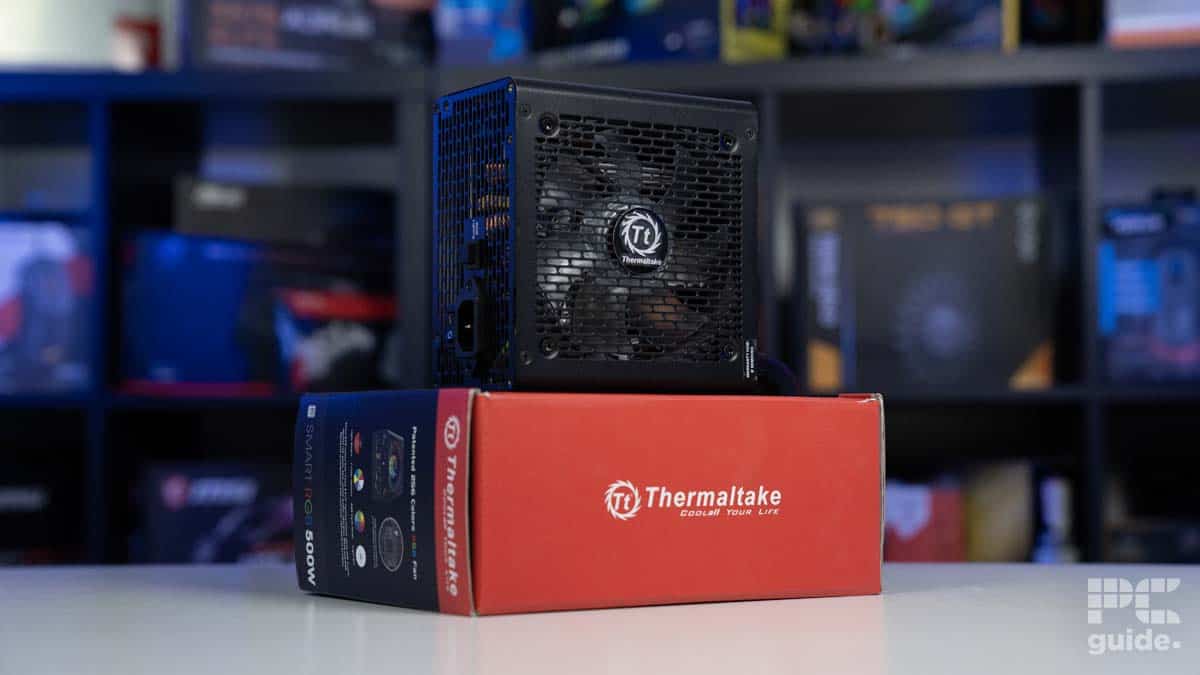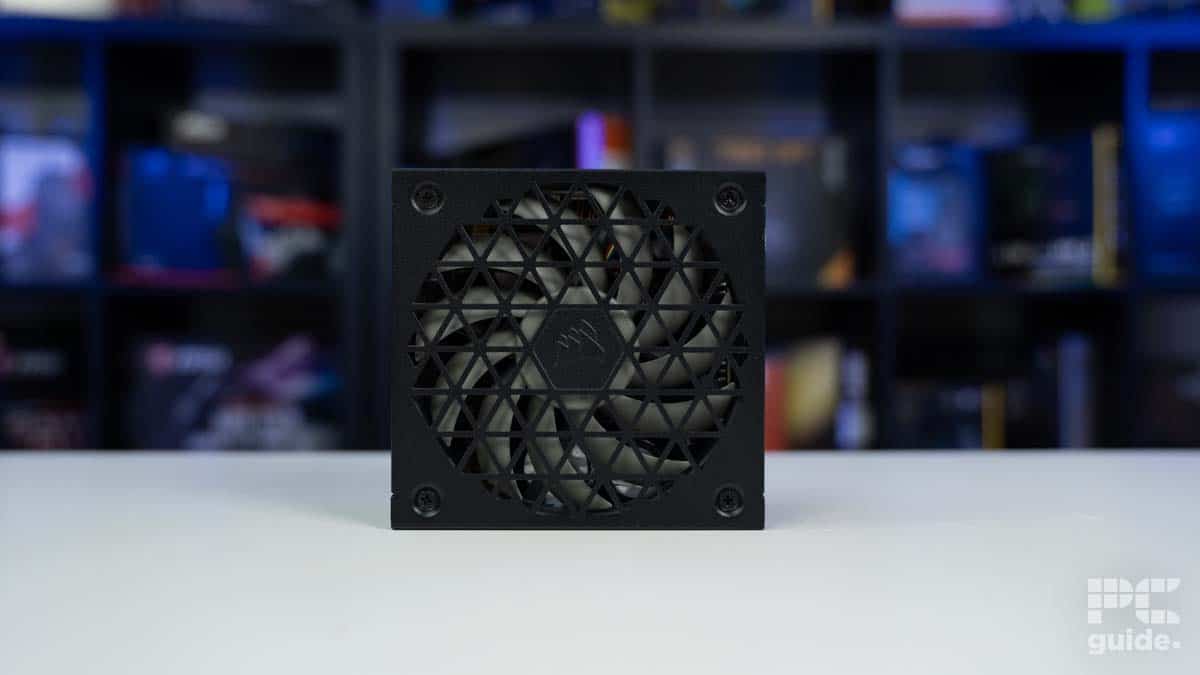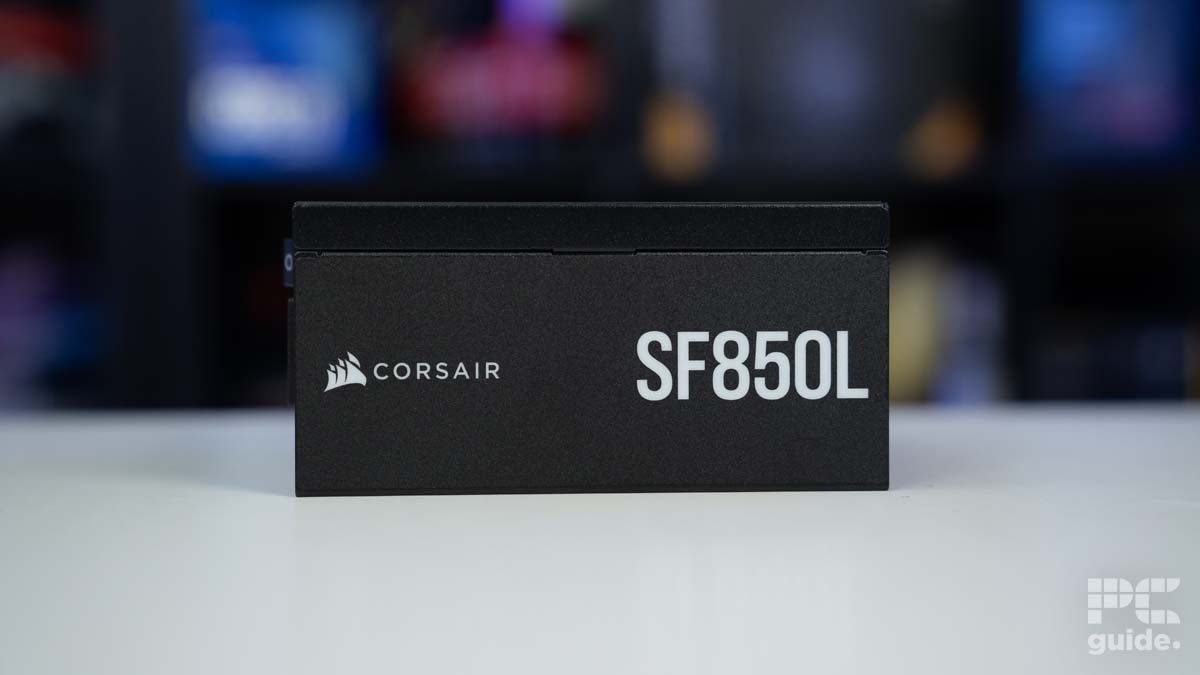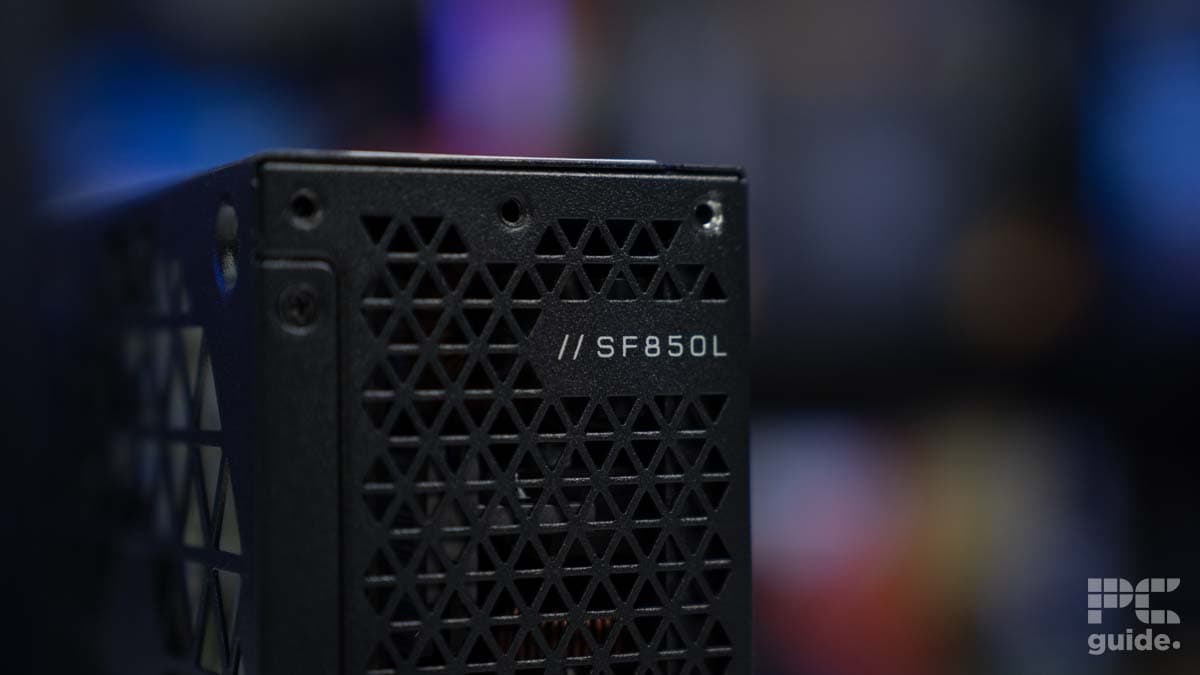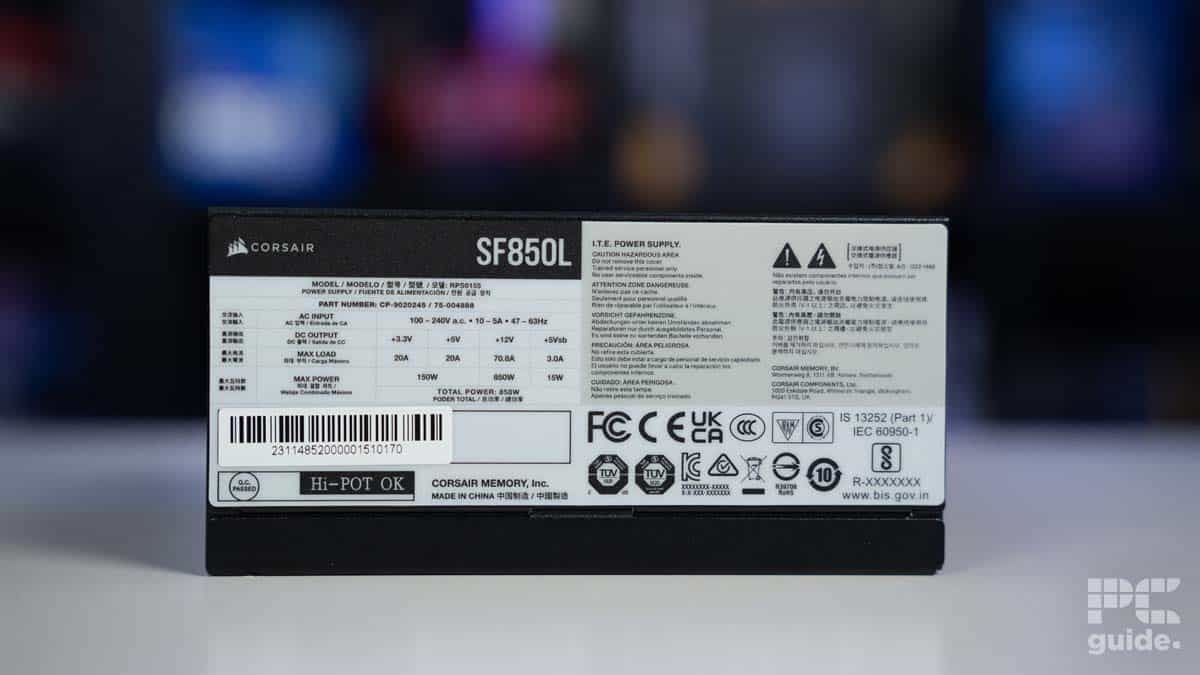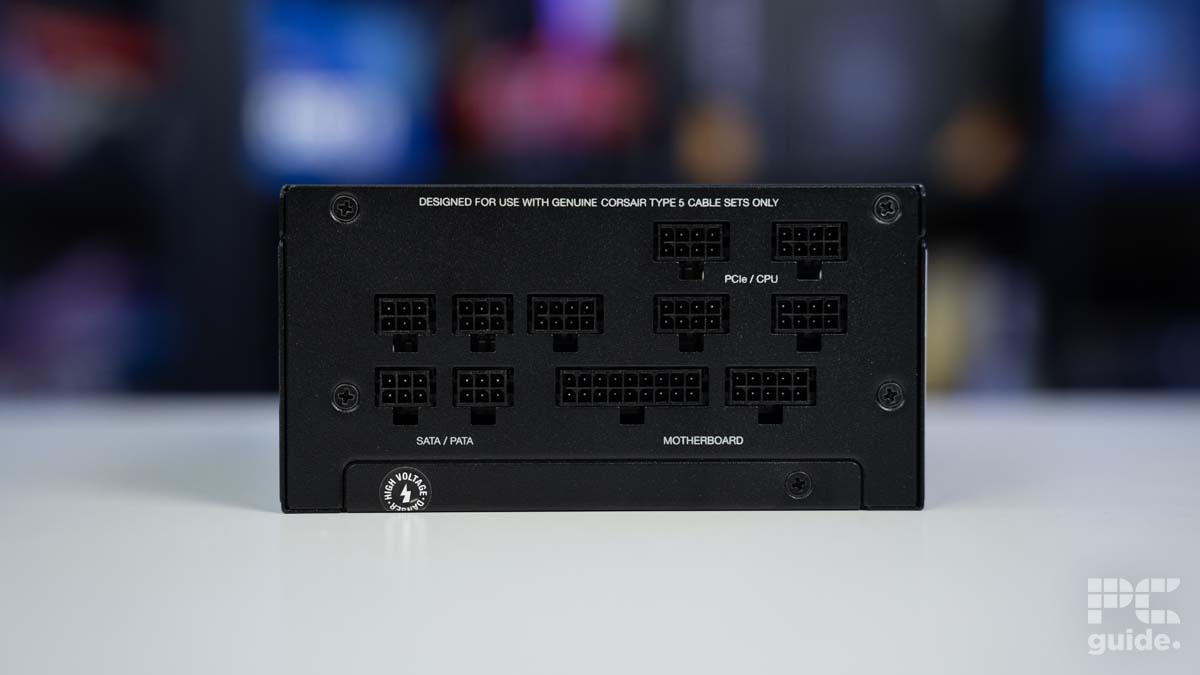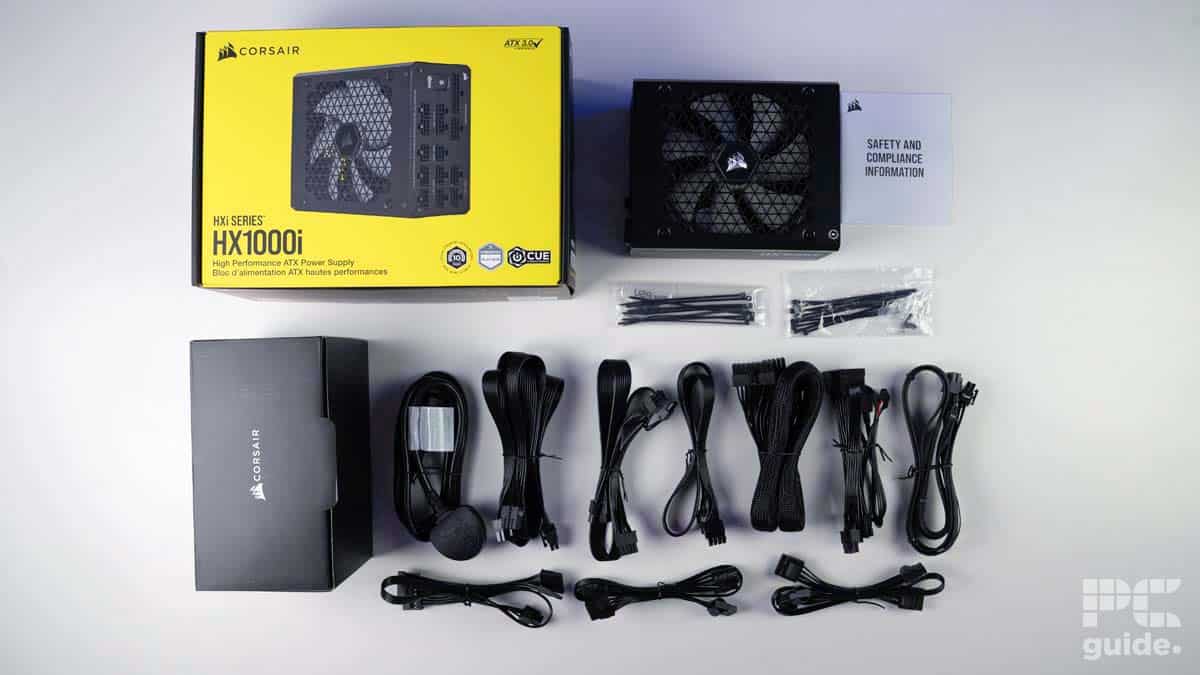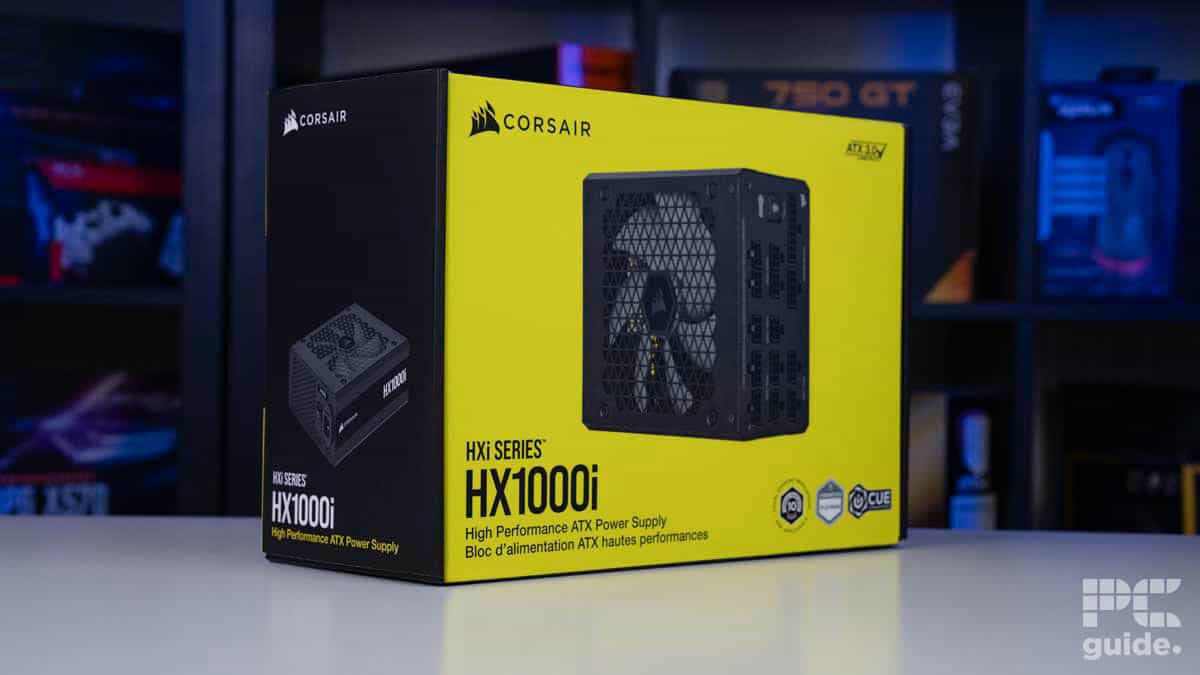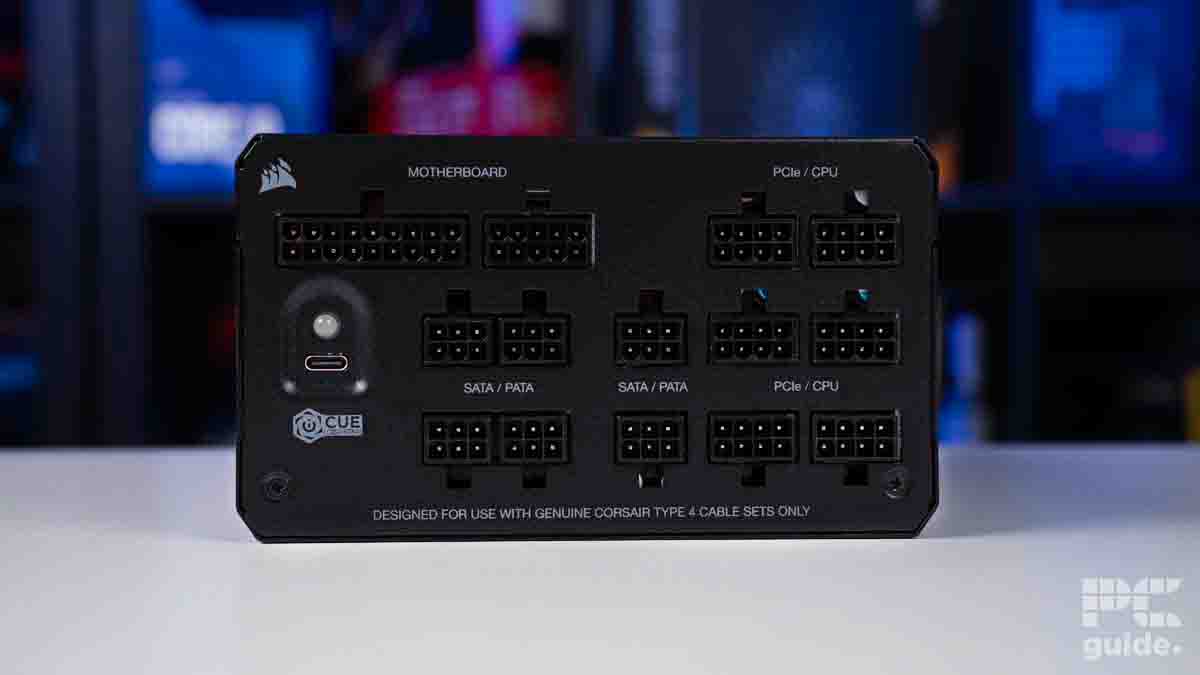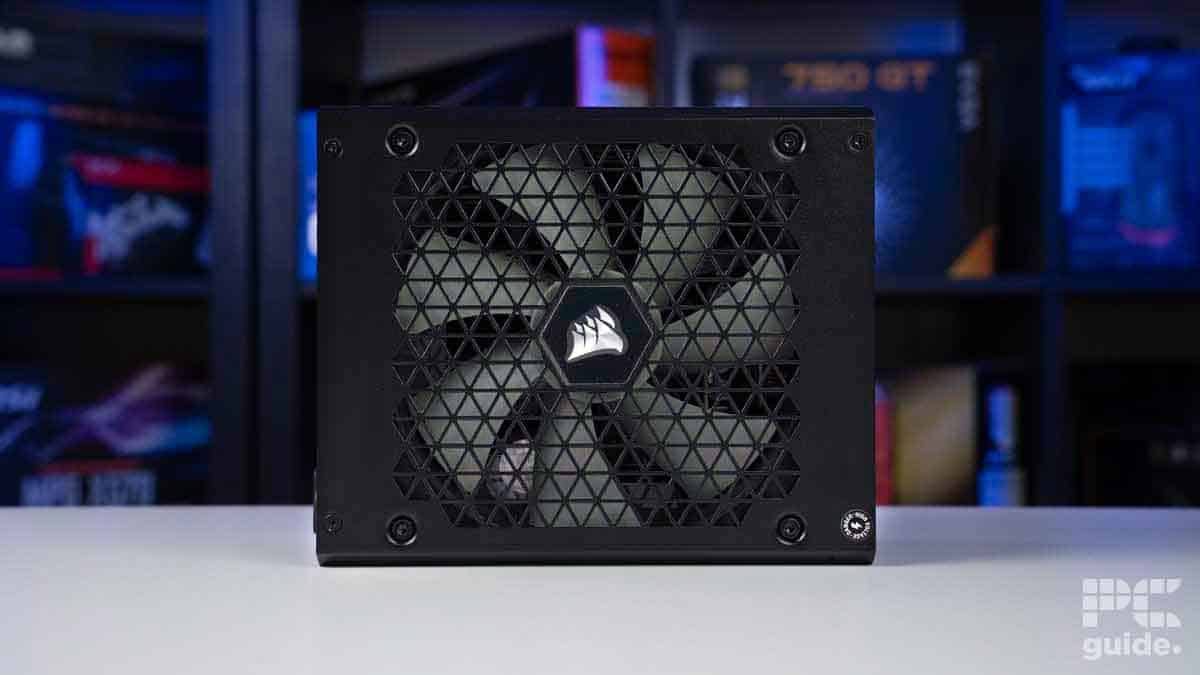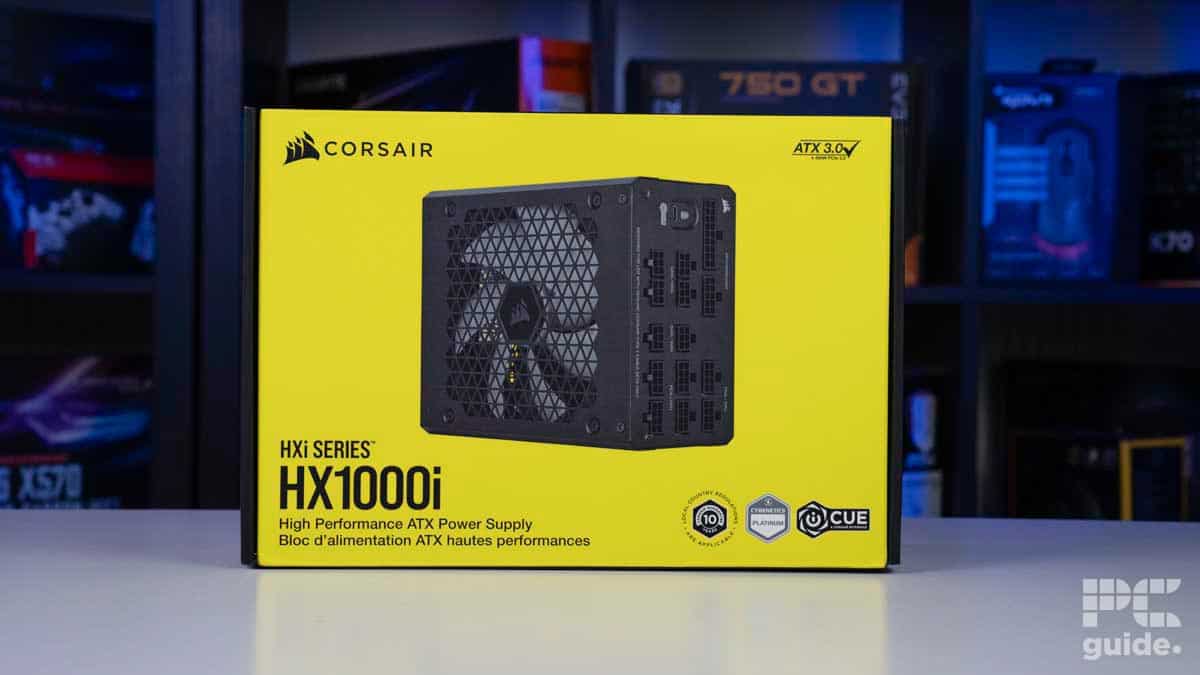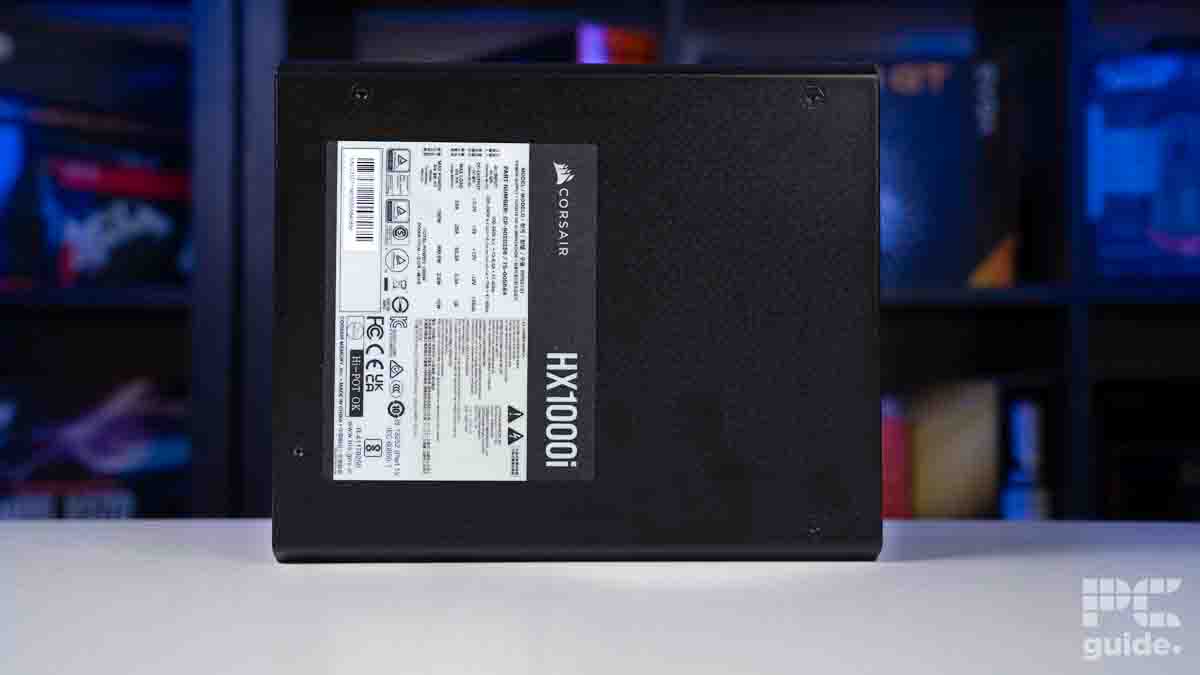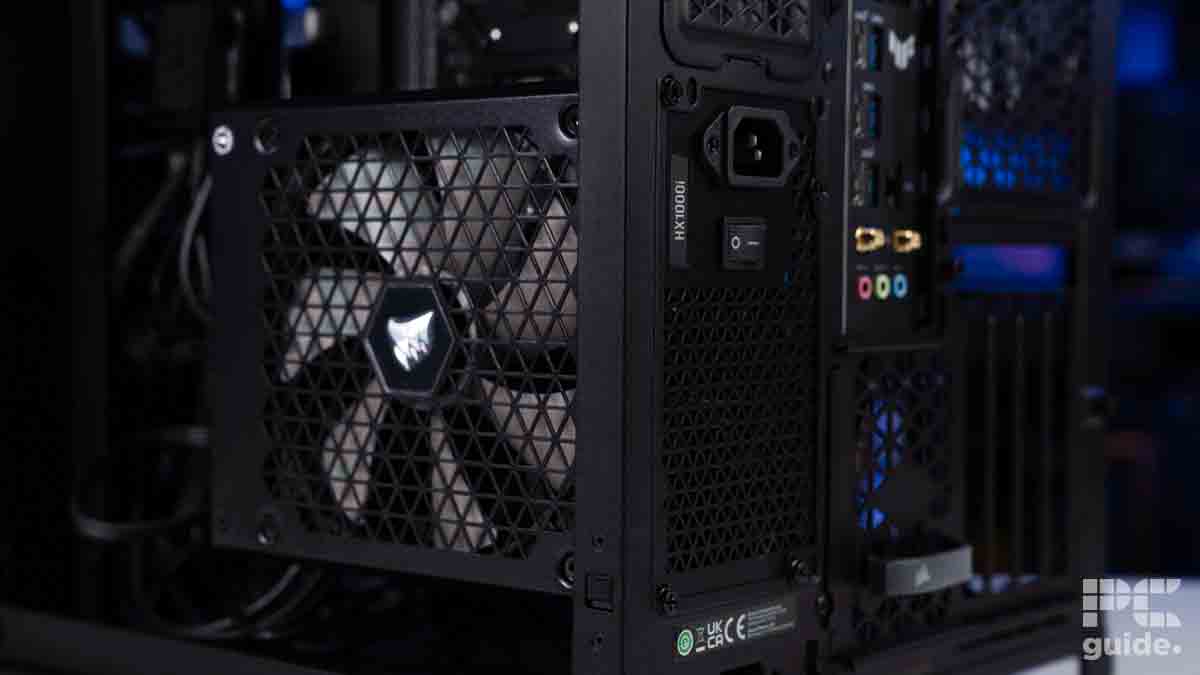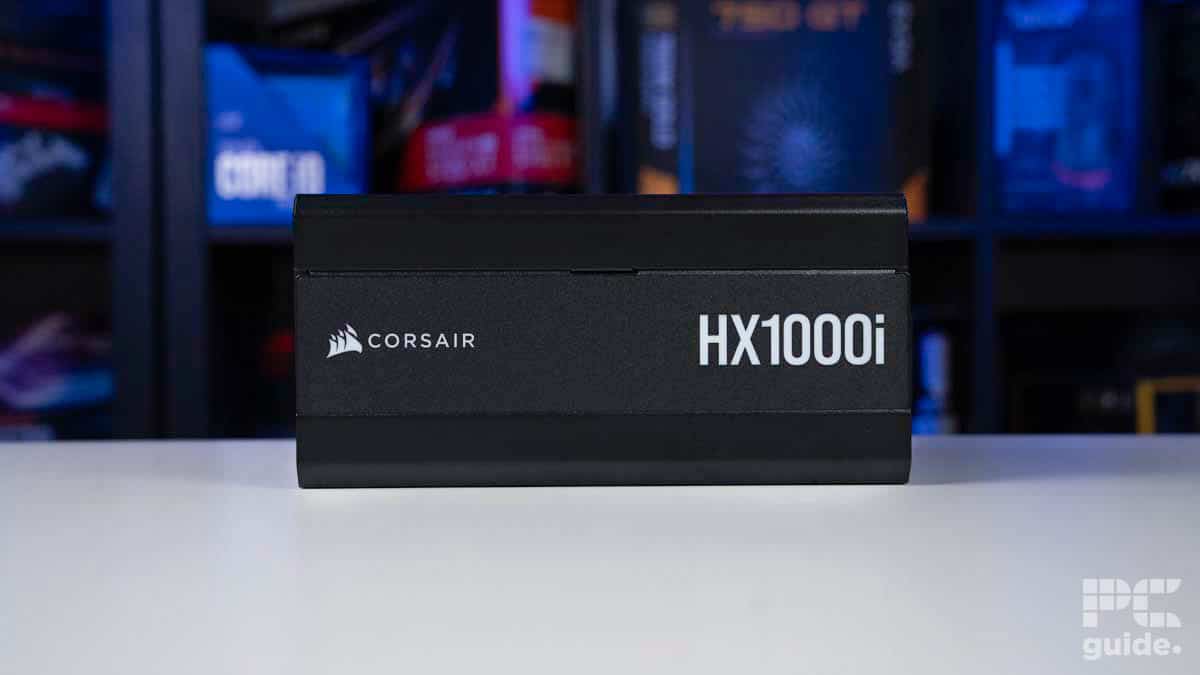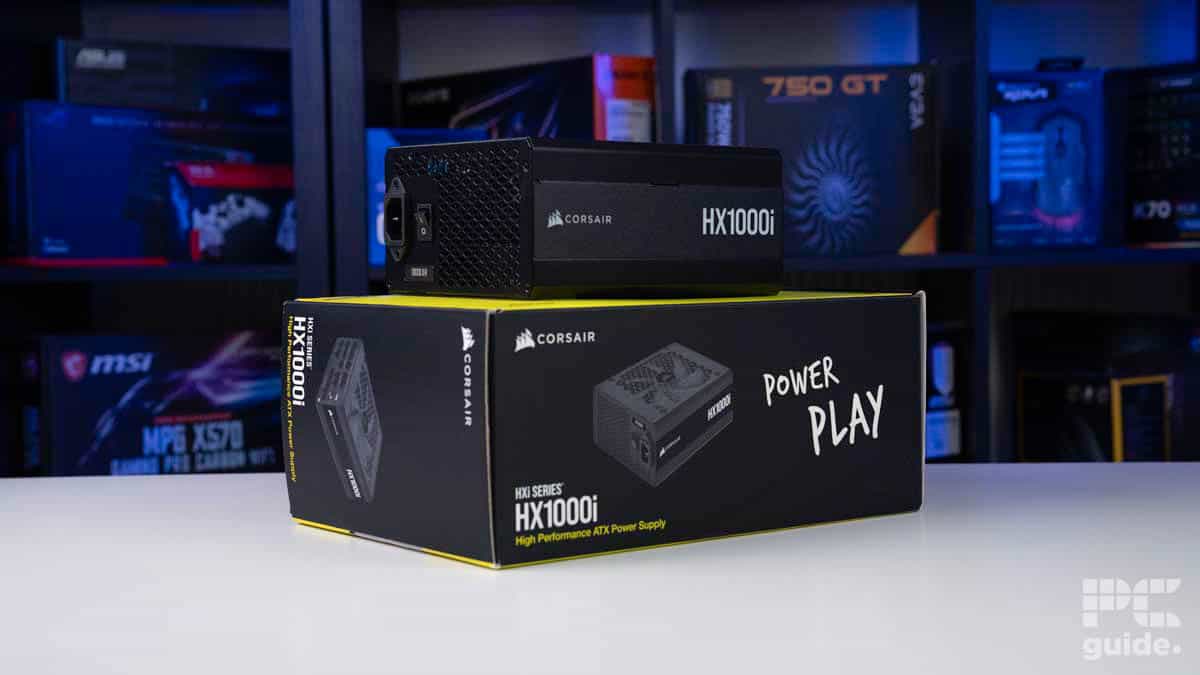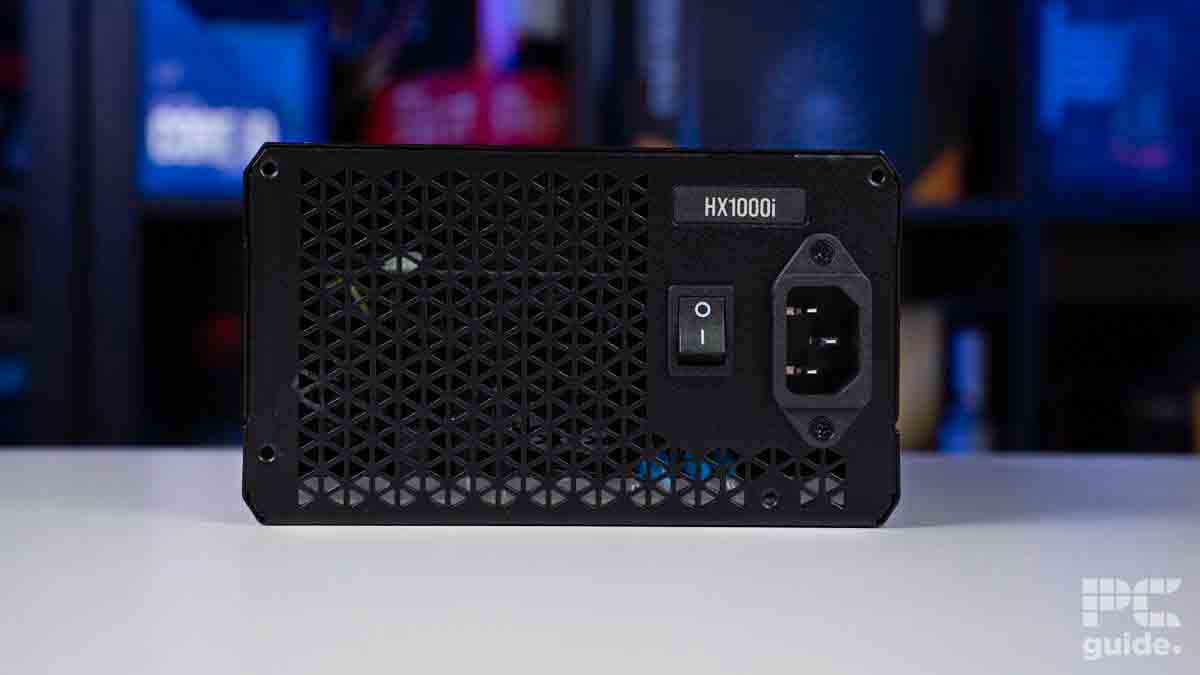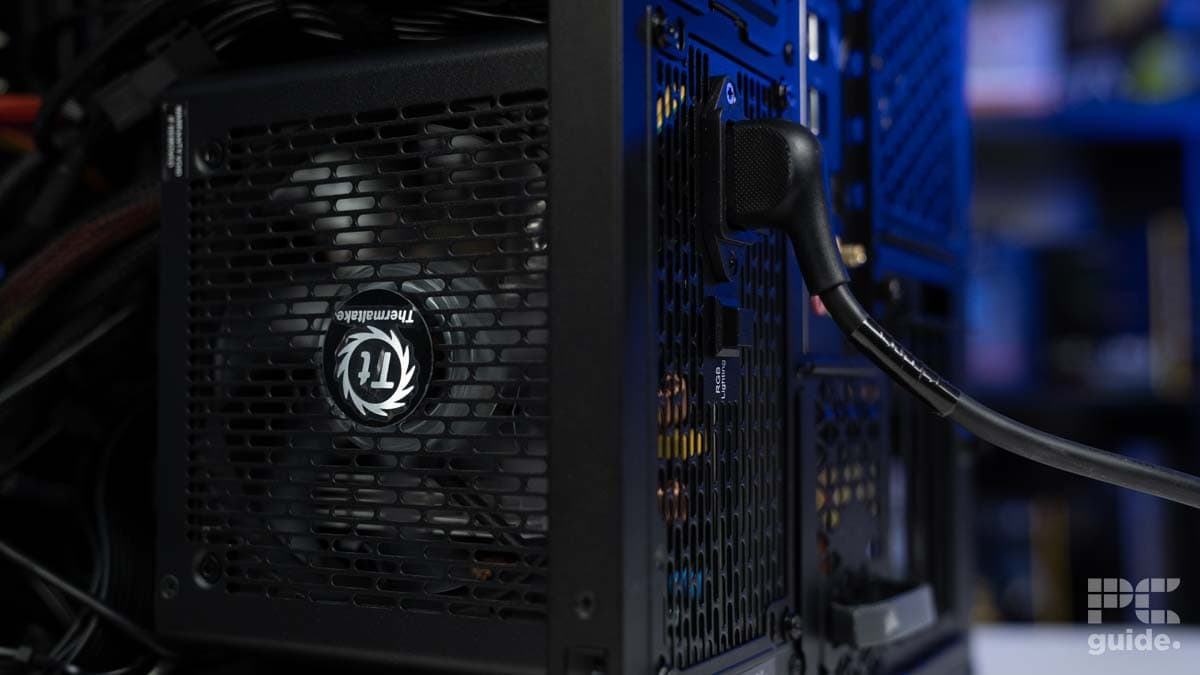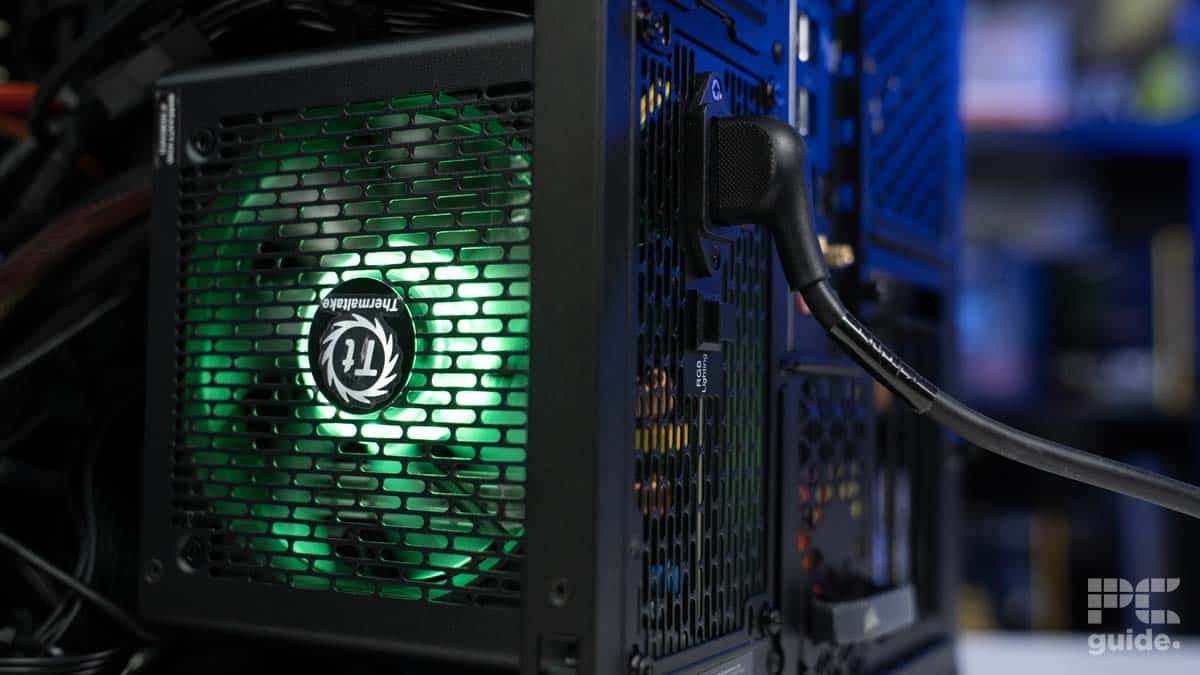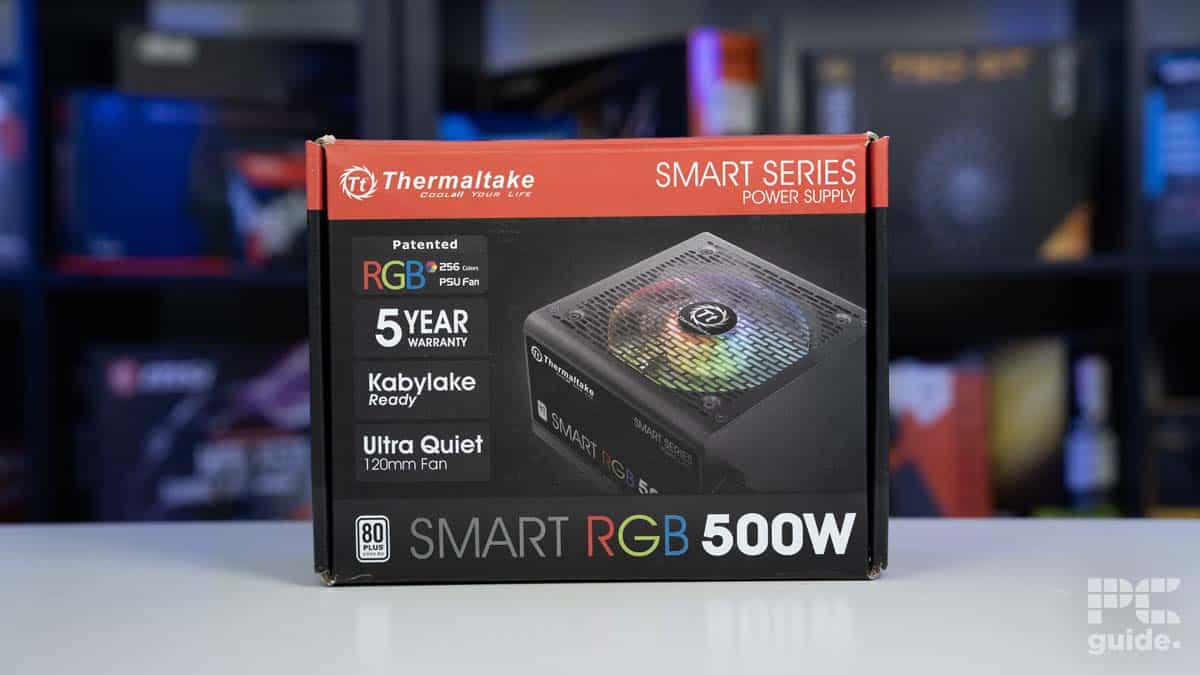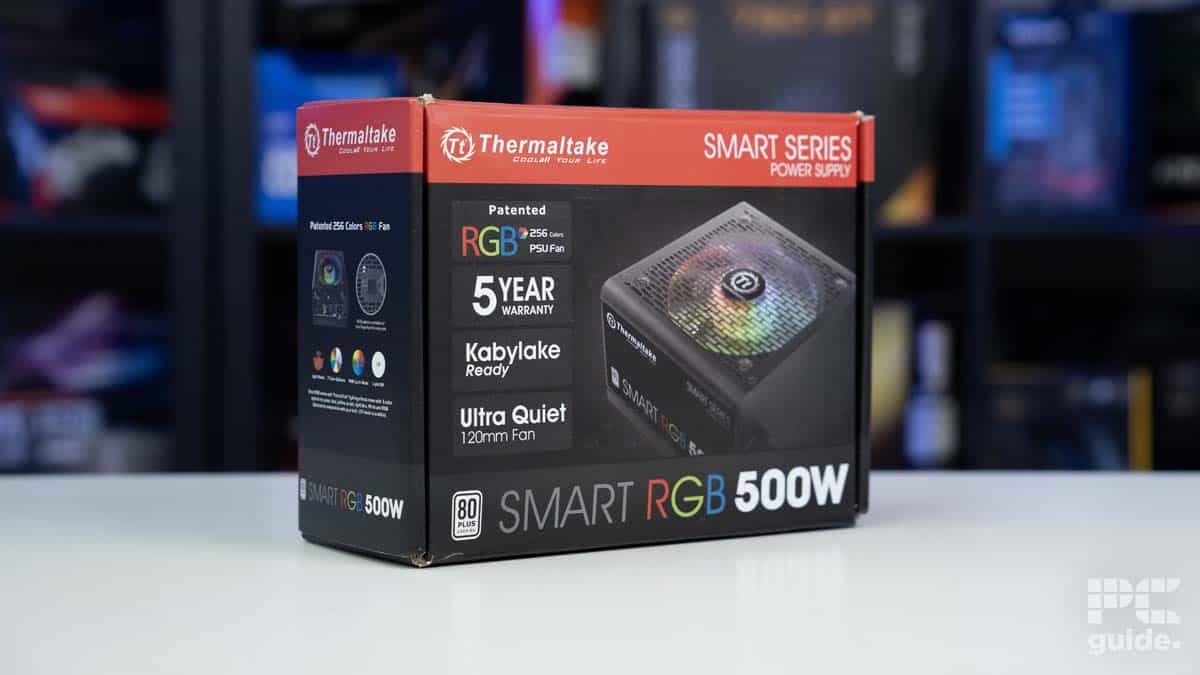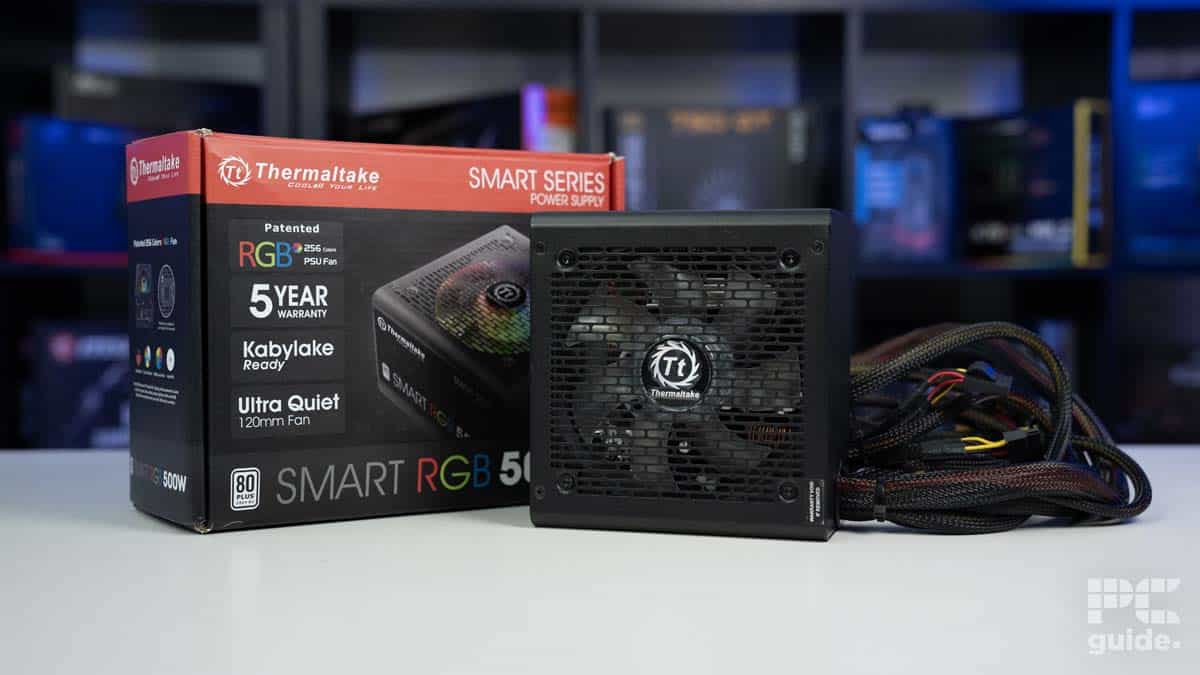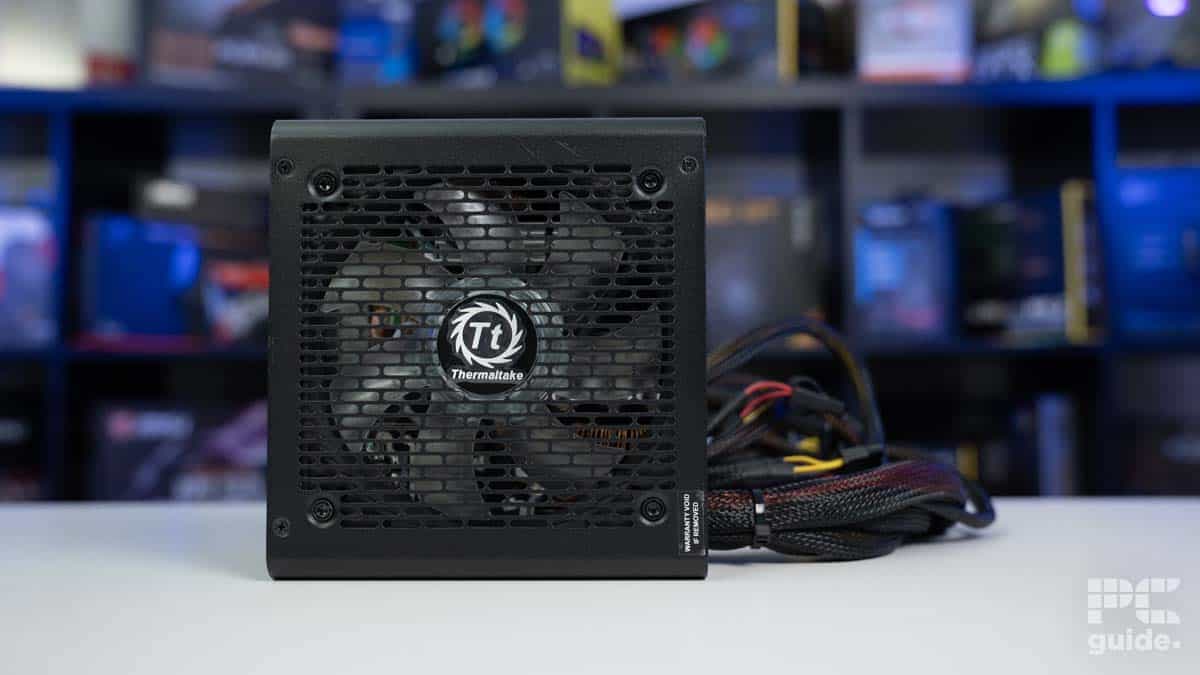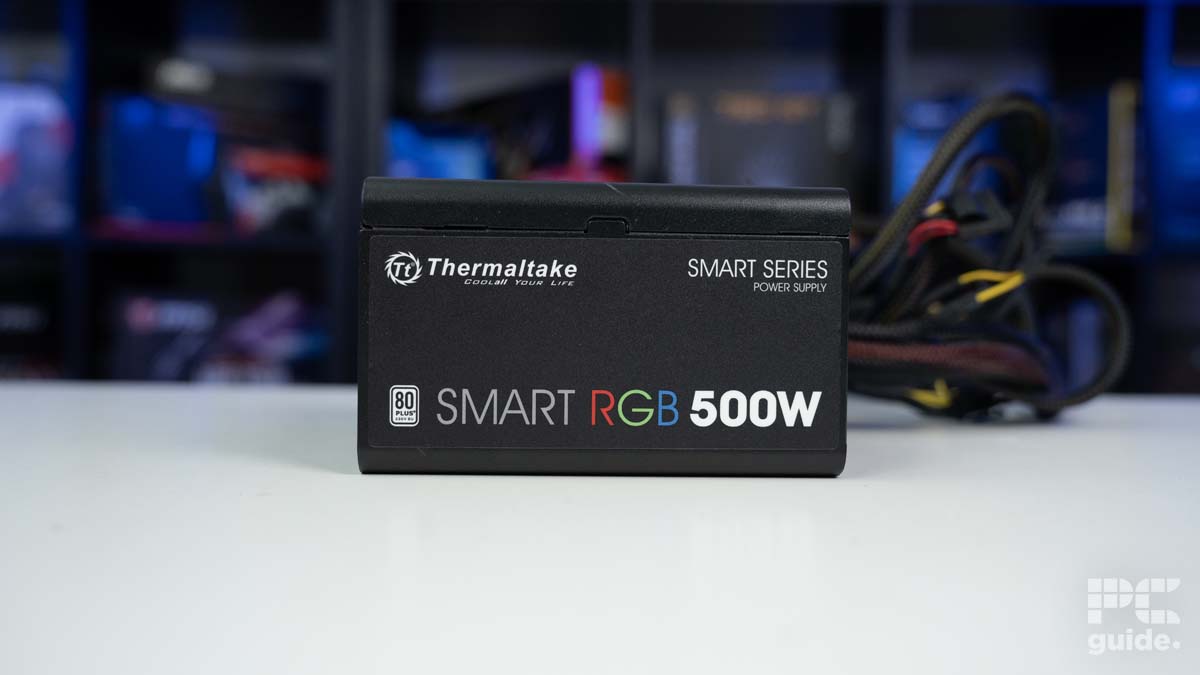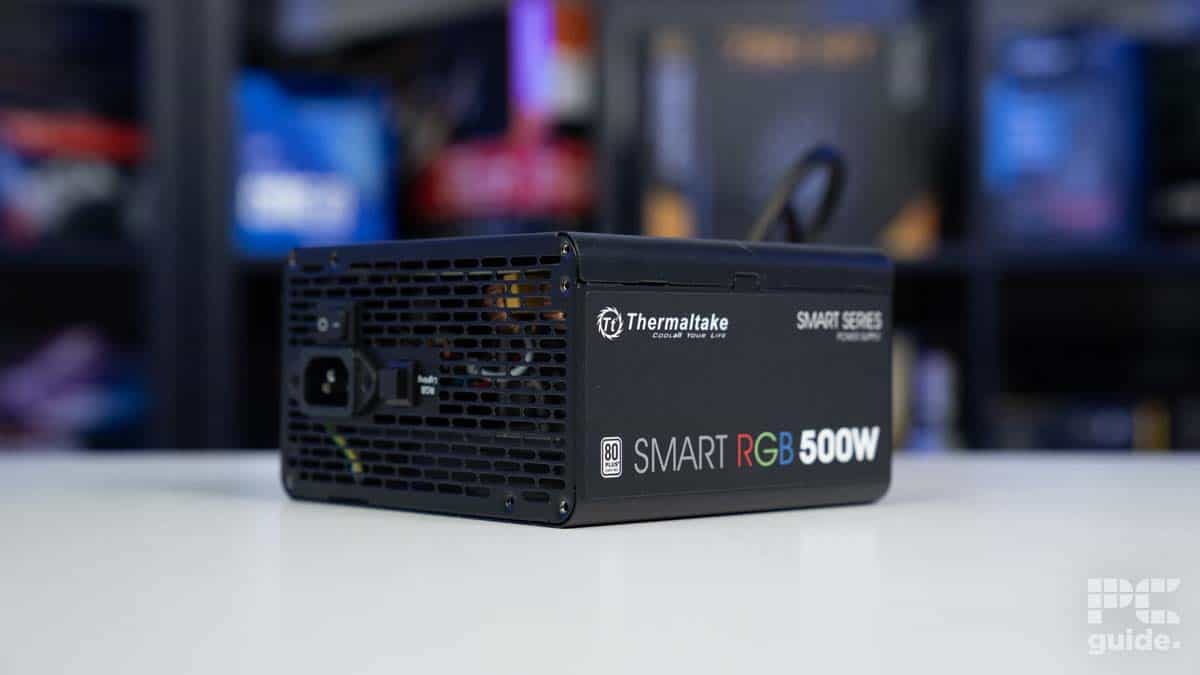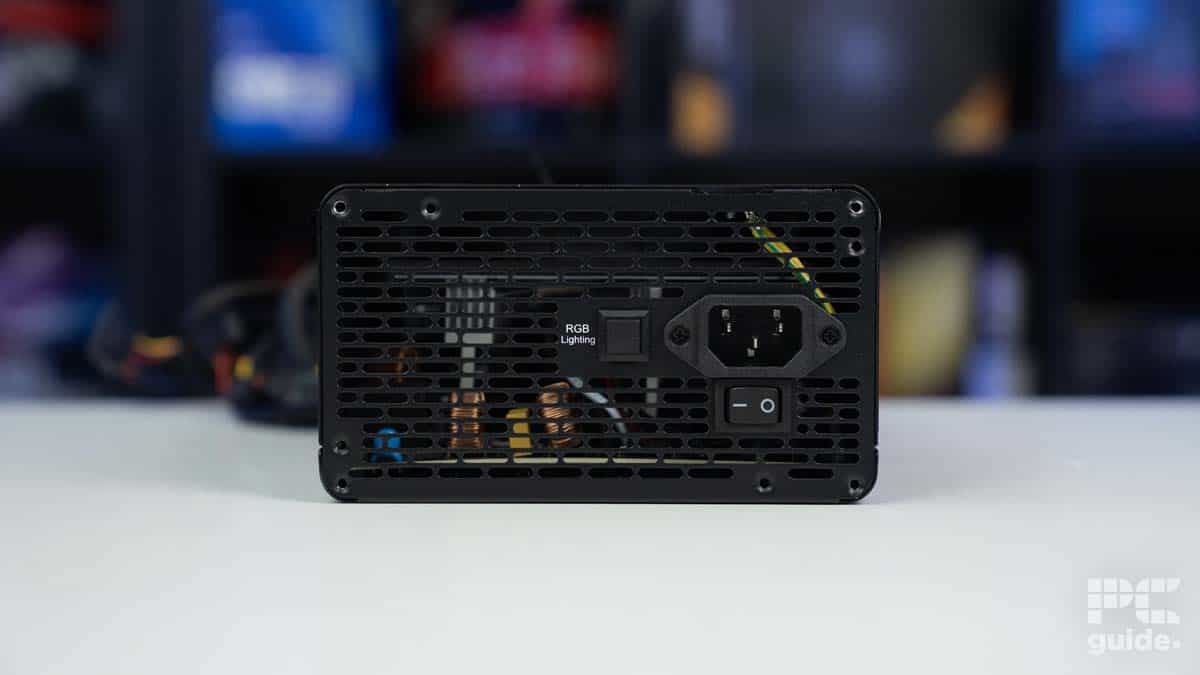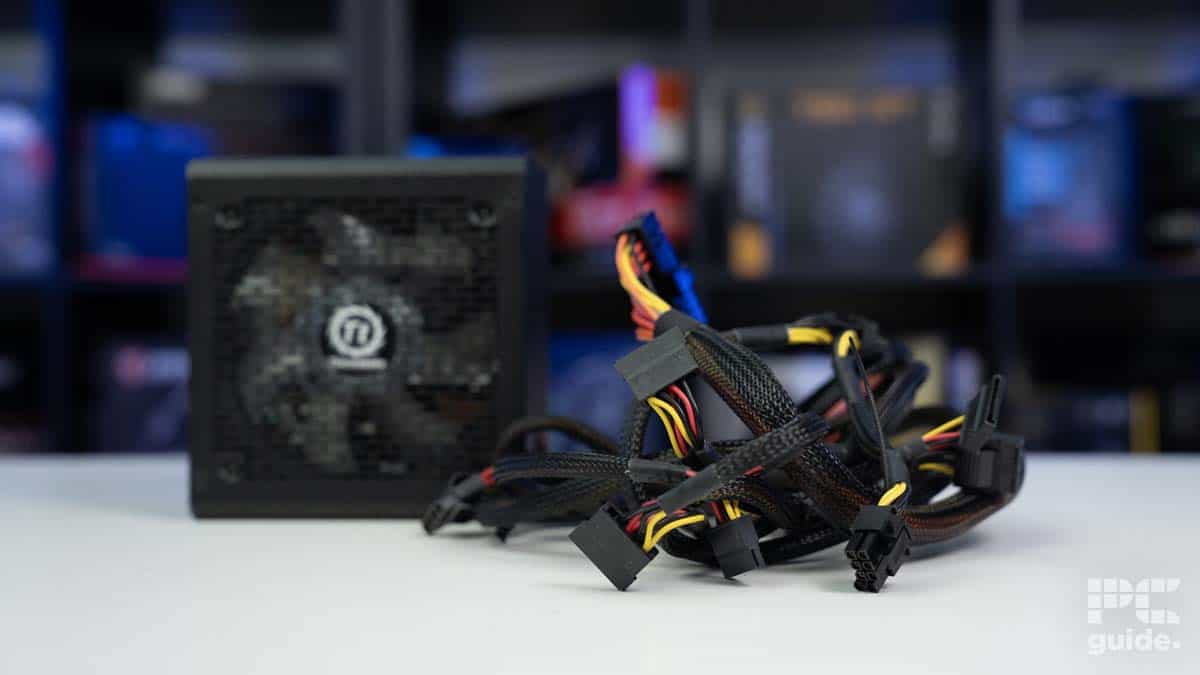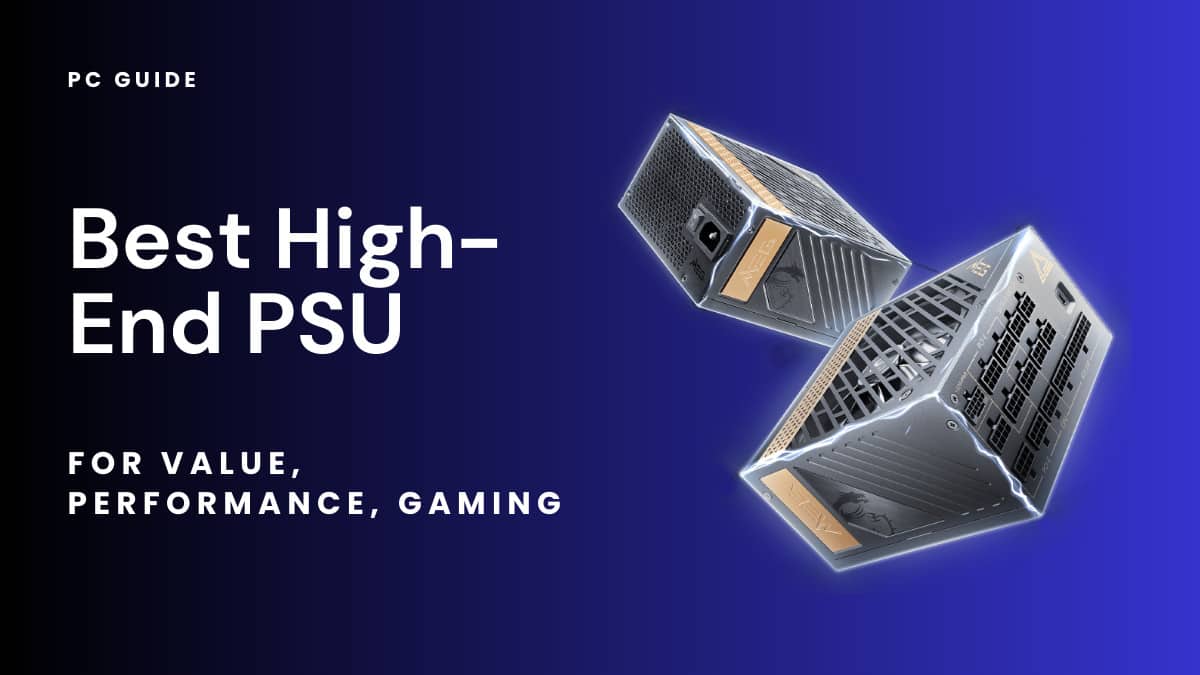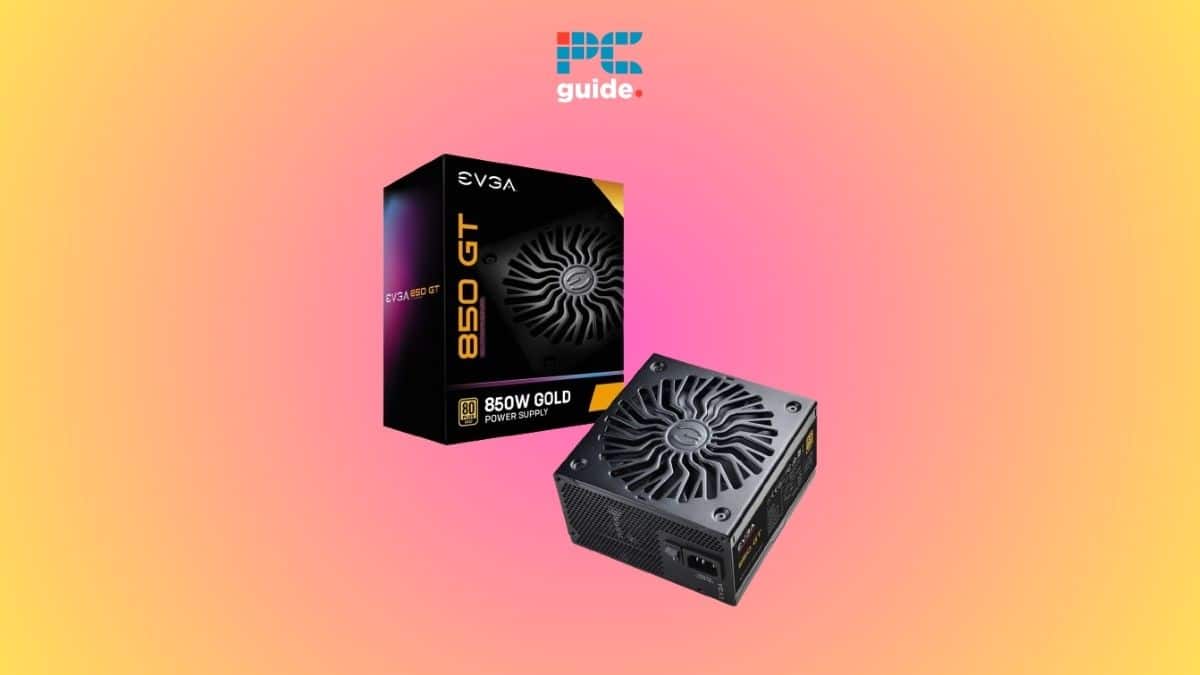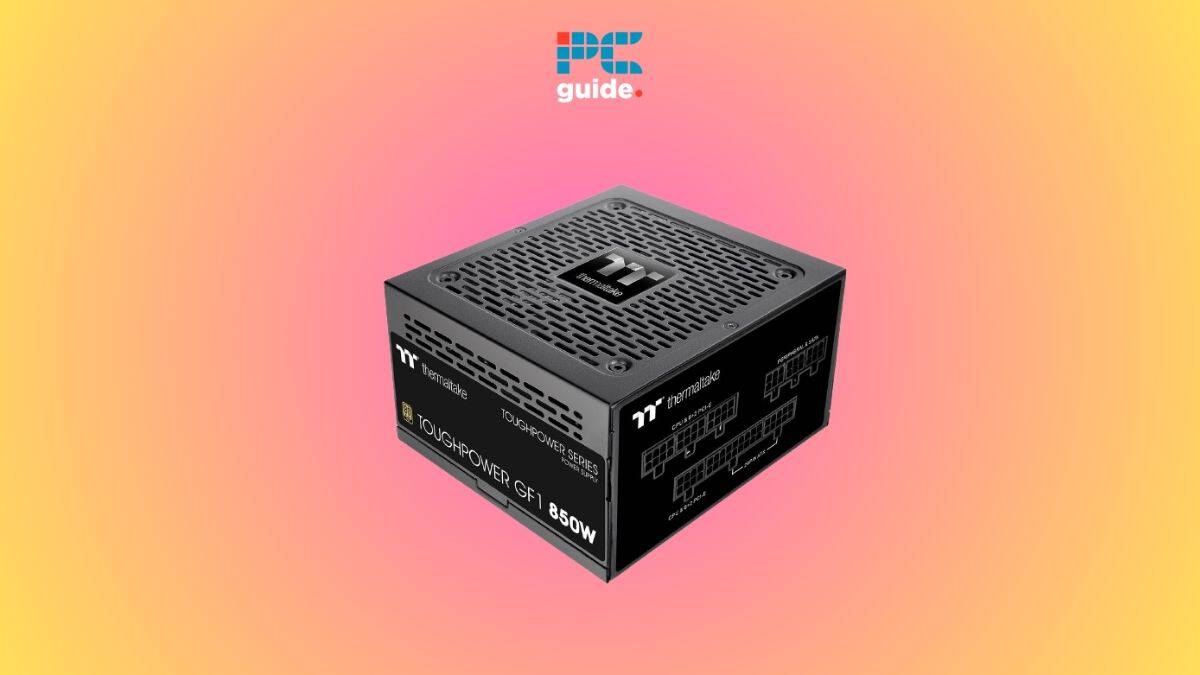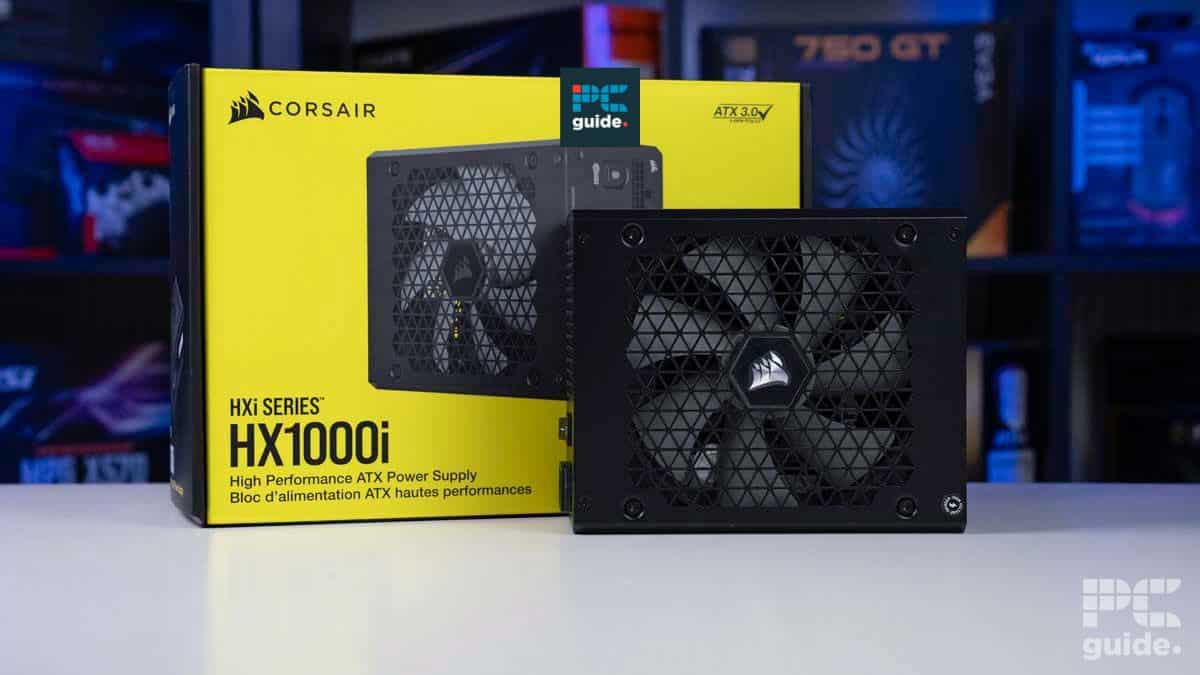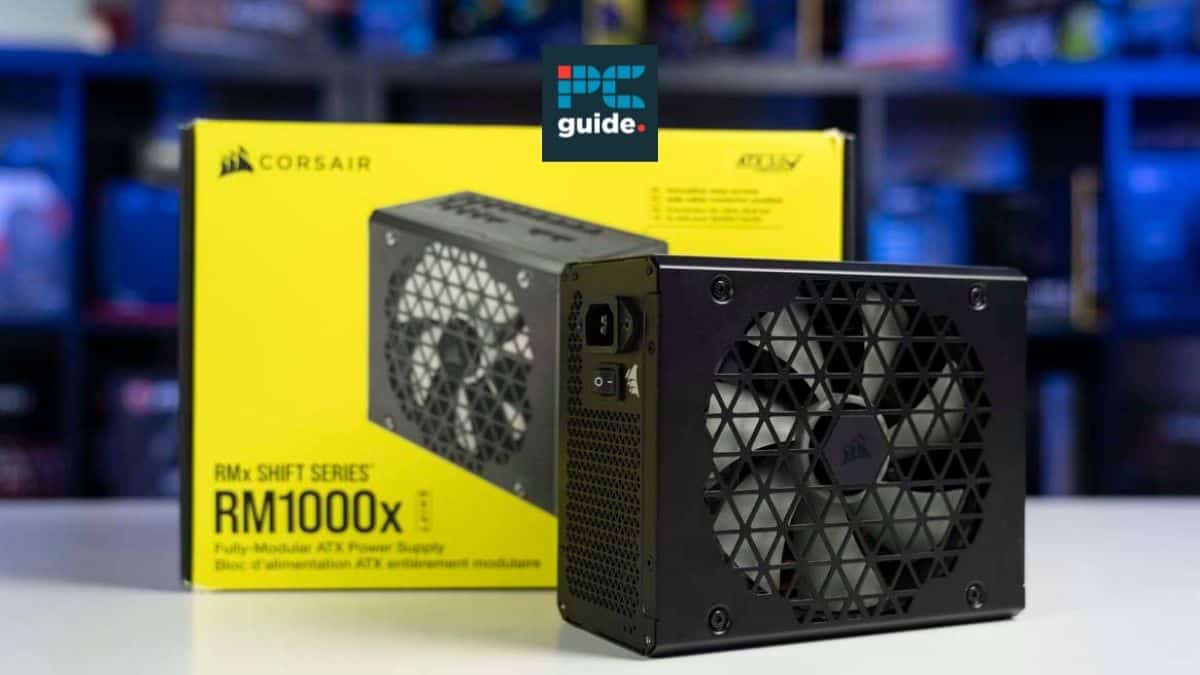Some people might say that a motherboard or a CPU is the most important component, but when you think about it, a PSU is responsible for powering it, which makes it one of the most, if not the most, crucial components in a PC.
That said, there aren’t specific benchmarks like you’d find with a CPU, which would tell how a PSU performs, which can make selecting one a bit challenging. On top of that, there is a sea of options available from various brands, which is great, but too many options can get confusing.
So, if you find yourself in the same boat, we’ve got you covered. We took the liberty of doing the research for you and put together this in-depth guide that lists multiple options, their details, and the pros and cons so you can make an informed decision. So, without further ado, let’s get right into it.
Products at a glance
-
Best power supply overall
Corsair RM750x 80 PLUS Gold
- Wattage: 750W
- Form Factor: ATX
- Rating: 80 PLUS Gold
- Design: Fully Modular
-
Best SFX power supply
Corsair SF850L
- Wattage: 850W
- Form Factor: SFX-L
- Rating: 80 Plus Gold, Cybenetics Platinum
- Design: Fully modular

-
Best power supply for efficiency
Corsair HX1000i
- Wattage: 1000W
- Form Factor: ATX (180mm length)
- Rating: 80+ Platinum, Cybenetics Platinum
- Design: Fully modular + iCUE link

-
Best budget power supply
Thermaltake Smart RGB 500W
- Wattage: 500W
- Form factor: ATX
- Rating: 80+ White, Cybenetics Bronze
- Design: Non-modular, RGB fan
-
Best unique power supply
Corsair RM850x SHIFT
- Wattage: 850W
- Form factor: ATX
- Rating : 80 PLUS Gold
- Design: Fully Modular
How we picked
It comes as no surprise that PSUs don’t get the limelight that CPUs or GPUs get because they lack the bells and whistles or simply the “wow” factor. That said, a PSU is the most important component in any build as it is responsible for ensuring that every component gets the necessary power and saves them in case of a surge.
So, considering its purpose, we take into account the efficiency, fan size, capacitors, form factor, and modularity of each PSU, test them in-house, and present you with a list of contenders that were able to tough it out. If you’re interested in learning how we test our CPUs, GPUs, routers, and printers, check out our PC Guide Testing Lab, where we explain the process in detail. Besides that, we’ve also explained how we test and review products to provide the utmost clarity to our readers.

- Wattage: 750W
- Form Factor: ATX
- Rating: 80 PLUS Gold
- Design: Fully Modular
- It has a 10-year warranty
- It has 2 EPS and 4 PCIe connectors
- It has a fully modular design
- More expensive than some other options
- Type 4 cable connectors are reported to be rough and inflexible
Corsair is known for producing many components, and its power supplies are well-liked among users. For our top pick, we went with the Corsair RM750x.
This is an ATX power supply unit with dimensions of 150mm W x 86mm H x 160mm L (5.9” x 3.3” x 6.2”). What this means is that it doesn’t have the form factor you’d find in an SFX PSU, but it should comfortably sit in mid- and full-tower cases. An advantage of ATX power supplies is better heat management due to their size. Since the internal components aren’t cramped, the thermal output has more space to dissipate.
The RM750x is also fully modular, meaning the cables aren’t attached to it. This should allow you to only connect the cables you want and put the rest of them back in the box, leading to less clutter and better cable management. As to what cables come with the RM750x, you should get the following:
- 1 ATX 24-pin cable (610mm)
- 2 EPS/ATX12V 8-pin cables (650mm)
- 2 PCIe 8-pin cables (750mm)
- 2 SATA cables (750mm, 3 SATA – right angle)
- 1 SATA cable (850mm, 4 SATA – right angle)
- 1 four-pin peripheral cable (750mm)
These cables should be more than enough for even the most high-end setups and should ensure that you can power everything adequately in your build.
This PSU has an 80-plus efficiency rating of Gold, which means that it should be at least 87% efficient at 50% load. Considering the efficiency of any PSU at 50% load is a sweet spot as it isn’t under a lot of load or sitting completely idle. However, according to Cybernetic, the RM750x is 88.397% efficient at 115V and 90.485% efficient at 230V.
These percentages are great as they showcase minimum electricity loss and maximum utilization of the PSUs draw from the socket. This also means lower electricity bills in the long run.
Regarding its noise output, according to Corsair’s quick start guide for RM750x, it should generate less than 5dB at 300W; for reference, a whisper, generally, is around 30dB. The higher you go, the more sound it’ll make, but at its maximum operational capacity, 750W, the noise level should be around 35-36dB.
It also features a 135mm magnetic levitation or maglev fan. Due to the magnetic separation, these fans don’t have any moving parts coming in contact. In other PSUs, bearings and fluid keep the fan spinning, but as time goes on, the fluid can dry up, leading to increased friction, noise, temperature, and the eventual failure of the fan or even the PSU. However, since maglev fans don’t have any moving parts coming in contact, they have a longer lifespan and almost no noise.
This RM750x also has a Mean Time between Failure (MTBF) of 100,000 hours. To put things into perspective, that means the PSU or any internal component can fail in 11 years. While this isn’t a definitive value, and the output can change depending on various external factors such as temperature, surge, or physical damage, it is good to know that a reliable PSU is powering your rig.
Also, it has a 10-year warranty, so if it fails, you can get it repaired or replaced during that time. What more could you ask for?
Lastly, it comes with Overvoltage Protection (OVP), Undervoltage Protection (UVP), Short Circuit Protection (SCP), Overtemperature Protection (OTP), and Overpower Protection (OPP). These protection technologies help ensure the PSU’s longevity and prevent PC components from frying.
To help you understand these technologies, we’ve explained them below.
- OVP: It shuts down the PSU when it detects that the DC output has crossed the set threshold.
- UVP: It shuts down the PSU when the set tolerance value goes below the set threshold.
- SCP: Upon detecting any rails (3.3V, 5V, and 12V) shorting to each other or the ground, the PSU shuts down to prevent its internal and PC components from frying.
- OTP: The PSU turns off when the set temperature exceeds the set limit.
- OPP: This controls how much power the PSU is using and shuts it down when it detects that more power is being drawn than the set limit. This helps prevent it from short-circuiting or overloading.
Overall, the RM750x is a solid power supply unit with excellent protection features, an aesthetic design, a low noise output, and, best of all, its fully modular nature.
What users say
According to Amazon reviews, this power supply unit has a stable output, great efficiency, low acoustics, and the ability to power various setups. One reviewer stated: “I fully recommend this product if you want enough power to provide for any gaming build with a good amount of headroom for future hardware that may consume more power.”

- Wattage: 850W
- Form Factor: SFX-L
- Rating: 80 Plus Gold, Cybenetics Platinum
- Design: Fully modular
- It weighs around 2.5 pounds or 1.1kg
- It has 100% Japanese 105°C-rated capacitors
- It had 90%+ efficiency during our testing
- The fan noise is higher than in other models
- Minor rails have high OCP values
Next, we have the perfect PSU for all the minimalist design enthusiasts or those with a smaller PC case, the Corsair SF850L. We had the pleasure of testing this PSU in-house, and in our review, we found that it has great performance and efficiency, but the small form factor contributes to some extra noise.
This PSU has dimensions of 130mm L x 125mm W x 63.5mm H (5.11” x 4.9” x 2.5”), making it much smaller than ATX power supplies and enabling it to comfortably fit inside small PC cases. While SFX PSUs do have the advantage in smaller spaces, their internal components pay the price for it as they have less space between them.
This can lead to overheating issues if not adequately cooled down. That said, this power supply unit has a 120mm Fluid Dynamic Bearing (FDB) fan, which should help keep its temperature at manageable levels. These fans are quiet and can be mounted in various orientations without compromising the fan spin.
That said, during our testing, it produced 36.09dB at 115V and 35.92dB at 230V. This aligns with its Cybernetics rating of Standard+, which is for the 35dB to 40dB noise range. While it isn’t very loud, generally, 40dB is compared to the sound level of a library or bird calls; it is comparatively more audible than other PSUs on our list.
As a small form factor choice, it provides great power and performance with great efficiency.
PC Guide
Regarding its efficiency, it has two ratings: 80 Plus Gold and Cybernetics gave it a platinum rating. However, its average efficiency in our tests was 90.577% at 115V and 92.33% at 230V. This means it certainly matches Cybernetics’ platinum standard, so it’s like getting a platinum PSU for the price of a gold PSU.
This PSU is also fully modular, meaning you can pick and choose which cables to use and reduce the clutter of additional wires. With this PSU, you should get:
- 1 ATX cable (300mm, 24-pin)
- 2 EPS/ATX 12V cables (400mm, 8-pin)
- 1 12VHPWR cable (400mm, 12+4 pin)
- 1 PCIe cable (400mm, 100mm, 6+2 pin)
- 2 PCIe cables (400mm, 6+2 pin)
- 1 SATA cable (445mm, 4 SATA – straight)
- 1 SATA cable (445mm, 4 SATA – right)
- 1 PATA cable (330mm, 4-pin)
A neat aspect of this power supply is that despite its small form factor, it still has the capability to output 850W of power on the single +12V rail and 150W on the multi, +3.3V, and +5V, rails. This means that you should be able to get more than enough juice to power your rig and comfortably overclock your GPU and the CPU without worrying about low power issues or crashing.
Along with its small size, it is also fully modular, which is great for cable management but also allows you to add various components when the need arises. On top of that, it has the same 100,000 MTBF hours as our top pick. However, it only has a seven-year warranty, which is less than RM750x’s ten years, but it should still be enough to shield your PSU through various upgrades and any potential failure or damage.
Last, it comes with a handful of protection technologies, the same as the RX750x. However, it also has Catastrophic Failure Protection (CFP), which ensures that the PSU shuts down in case of failure due to flame, fused PCB conductor, charred PCB, smoke, etc.
So, all things considered, the SF850L is another solid addition from Corsair, and given its performance and price tag, it is worth the investment if you’re on the market for an SFX PSU.
What users say
The user reception of the Corsair SF850L is massively positive, and its reviews praise it for its compact design, efficiency, and stable performance. Many reviewers were pleased with its quiet operation, which should let you know that 35-36db isn’t deafening. One reviewer stated: “With its efficiency, reliability, modular design, and quiet operation, it provides everything you need for a high-performance system without compromising on space.” which we believe sums up this PSU perfectly.

- Wattage: 1000W
- Form Factor: ATX (180mm length)
- Rating: 80+ Platinum, Cybenetics Platinum
- Design: Fully modular + iCUE link
- Excellent efficiency and a 10-year warranty
- Virtually silent fan operation
- Has a USB-C connection for accurate monitoring via the iCUE software
- It comes with a hefty price tag
- It requires a full-tower case with a spacious PSU compartment
For our third pick, the reign of Corsair continues with the HX1000i power supply as our best efficient pick. This PSU has a platinum efficiency rating from Cybernetic and 80 Plus. In our Corsair HX1000i review, we verified its operational efficiency with our test setup and were glad with its performance.
This is a fully modular ATX power supply unit with dimensions of 180mm L x 150mm W x 86mm H (7.09” x 5.91” x 3.39”). These dimensions mean it needs a spacious casing to be comfortably housed, and it isn’t designed for mid-tower or mini PC cases.
That said, its full modularity means the cables won’t be an issue even if you’re slightly tight on space but can manage to fit it. You can only connect the necessary cables, keep the rest stored away, and bring them out when you need to connect another component. As for what cables come in the package, you should get the following:
- 1 ATX 24-pin cable (610mm)
- 2 EPS/ATX12V 8-pin cables (650mm)
- 1 12VHPWR cable (650mm)
- 2 8-pin PCIe cables (775mm)
- 2 SATA cables (800mm, 4 SATA – straight)
- 2 PATA 4-pin cables (750mm)
- 1 USB-C to 10-1 pin (525mm)
These cables should be enough to connect and power various components, with enough left over for future upgrades.
It has a 140mm FDB fan, which makes sense since it’s a powerful PSU and requires adequate airflow to keep it cool. Cybernetics has rated this PSU as an “A” in noise levels, which means its range is 20-25dB. This noise level is barely noticeable, yet the fan does a good job of keeping the temperature under control.
The Corsair HX1000i is an outstanding power supply, for a component that might not be at the forefront of your build it brings about so much more than the rest.
PC Guide
Regarding its performance and efficiency, our testing found that it remained at 90% efficiency when idle and peaked at 93.93% when tested against heavy workloads. So, not only does it provide a good overhead for extreme hardware and overclocking for your system, but it also keeps it running optimally and ensures low electricity bills in the long run.
Our findings matched the Cybernetic results, which claim that the HX1000i has an 89.9% average efficiency with 115V and 91.4% efficiency with 230V.
This PSU comes with 2 EPS and 5 PCIe connectors, meaning you should have enough cables to power various PCIe devices. The 12VHPWR connector, in addition to its ATX 3.0 support, should ensure you can effortlessly run modern Nvidia and AMD GPUs.
The maximum load of its 12+ single-rail connection is 83.3A, which means you should have plenty of headroom to power an overclocked GPU. If the power draw exceeds that, the OCP should trigger a shutdown, saving your components from shorting.
The HX1000i has a zero RPM mode, which means the fan won’t spin unless necessary. This should reduce the already low noise levels but ensure that the PSU won’t heat up, as the fan will start spinning as soon as load is detected.
Lastly, the most cool aspect of this PSU is its compatibility with Corsair’s iCUE software. This should enable you to set the fan curve according to the workload and temperature, check the power settings, and more. This is a great addition, particularly for individuals located in hotter regions, as the components require more cooling due to ambient temperature. Setting custom fan curves should help with that.
Overall, this is one of the best PSUs available, and while it does come at a premium, its performance and efficiency make it worth every penny.
What users say
According to customer reviews on Amazon, this PSU has amazing performance, efficiency, and build quality. The almost noiseless acoustics of this power supply are a major hit among the reviewers, and one user stated: “I would wholeheartedly endorse this PSU and wouldn’t hesitate to purchase it again.”
- Wattage: 500W
- Form factor: ATX
- Rating: 80+ White, Cybenetics Bronze
- Design: Non-modular, RGB fan
- Inexpensive option that delivers decent performance
- Intelligent fan should adjust the speed automatically
- It’s only rated for 80+ White efficiency
- The fan noise is above the 40dB mark
For our more budget-conscious readers, we recommend giving the Thermaltake Smart RGB 500W power supply a shot. In our Smart RGB 500W review, it had decent performance fitting for a budget option.
This is a non-modular PSU, which means its cables are permanently attached to it. In terms of cable management, this means you won’t have the refinement of a fully modular PSU, and you’ll have to tie the unused cables and store them in the PSU compartment. As for the cables, it has the following:
- 1 24-pin ATX cable (500mm)
- 1 12V ATX cable (4+4 pin, 550mm)
- 6 SATA cables (4-pin, 500mm+100mm+100mm)
- 2 PCIe cables (500mm + 100mm)
- 3 peripheral cables (4-pin, 500mm+100mm+100mm)
- 1 FFD cable (4-pin, 100mm)
This is 150mm in length, 140mm in width, and 83mm in height (5.9” L x 5.5” W X 3.3” H). These dimensions are seen in most ATX PSUs, which means the Smart RGB 500W can fit in a mid-tower case, but that wouldn’t be possible in a smaller casing.
It features a 120mm fan with a maximum RPM of 1800. According to Thermaltake, it has intelligent RPM control, meaning it’ll adjust its speed according to the load and temperature. They also claim that it has a noise level of 27.1dB at 100% load. Our testing found that it reached 43.97dB and 43.32dB for the 115V and 230V versions, respectively. According to the Cybernetic noise level standards, this puts this PSU in the standard category.
The Thermaltake Smart RGB 500W is a perfectly fine choice for a budget build when you want a good value option.
PC Guide
Regarding its efficiency, Thermaltake has rated it 82-86% efficiency at 20%-100% load. We tested its efficiency for the 115V and 230V versions, and it managed 82.838% and 85.490% efficiency, respectively, which makes sense since it has an 80-plus white rating.
So, it delivers what it promises in terms of efficiency, but the acoustics are far from quiet, and if you want a noiseless build, this PSU wouldn’t be an ideal fit.
The Smart RGB 500W PSU comes with an RGB lighting button on the back, which you can turn on/off for RGB effects. There are a multitude of effects available, and you should be able to choose the color that matches the aesthetic of your build.
Regarding protection technologies, it features OVP, OPP, and SCP. These technologies should protect it from undervoltage or a power surge by turning it off immediately when the current exceeds the value set as the limit. The Overvoltage protection is set at the following values:
- +3.3V: 3.7V – 4.3V
- +5V: 5.7V – 6.8V
- +12V: 13.8V – 15.6V
In addition, it has similar 100,000 MTBF hours but a 5-year warranty. That said, we need to keep in mind that this is a budget pick, and options with better features and warranties also come with a directly proportional price tag.
Overall, this is a solid budget PSU choice. While its fan noise might deter some from opting for it, this should work perfectly fine if you’re operating on limited cash and your setup doesn’t require a heavy PSU.
What users say
According to Amazon reviews, the Thermaltake Smart RGB 500W PSU is a reliable and inexpensive option that delivers what it says. One reviewer said: “No experience with a warranty claim as I’ve never had to do that with these,” which tells that they are more than satisfied with their purchase and never experienced any faults.
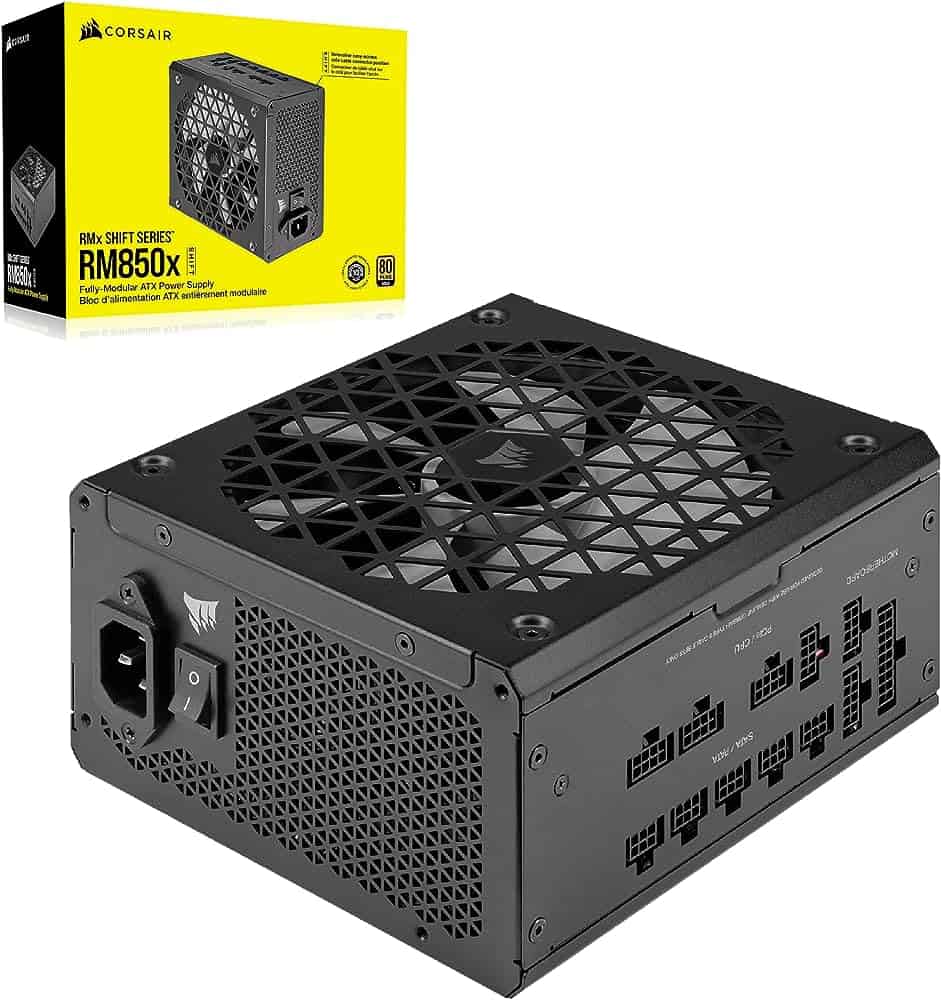
- Wattage: 850W
- Form factor: ATX
- Rating : 80 PLUS Gold
- Design: Fully Modular
- Zero RPM mode for ultra-quiet operation
- It is ATX 3.1 compatible
- PCIe 5.1 cables are included to power the latest Nvidia and AMD GPUs
- The accompanying cables can be stiff
For our last pick, we see Corsair making a coming back and planning to conclude things with a bang. And for that, we’ve got the RM850x Shift White PSU.
This is an ATX power supply unit with dimensions of 160mm L x 150mm W x 86mm H (6.2” x 5.9” x 3.3”). This means it’s not as small as an SFX PSU but smaller than the HX1000i. So, it should fit snuggly inside a mid- or a full-tower case.
That said, the Shift series from Corsair brought an interesting design change by moving the cable interface on the side of the PSU. This should allow for easier cable management, combined with its fully modular nature, and enable different installation settings.
The RM850x Shift White is fully modular, which allows you to add or remove the connecting cables depending on the requirements. For example, if you want to expand your storage by installing an HDD, you can do so by connecting the HDD to the power supply and attaching a SATA cable to the HDD. As for what cables come with the RM850x Shift White, you should get the following:
- 1 ATX 24-pin cable (610mm)
- 2 EPS/ATX12V cables (650mm, 4+4)
- 1 12VHPWR cable (650mm, 12+4)
- 2 PCIe cables (750mm, 6+2)
- 2 PCIe cables (650mm, 6+2)
- 3 SATA cables (800mm, 4 SATA)
- 1 PATA cable (750mm, 4-pin)
In addition to the necessary cables, like the ATX power cable, the 4 PCIe cables should allow you to connect multiple PCIe devices, allowing you to customize and upgrade your build further.
This PSU has an 80-plus efficiency rating of Gold. This generally means that a PSU is 87% efficient at 20% and 100% load and 90% efficient at 50% load. This gives us an idea of how a particular PSU should perform under heavy loads and idle conditions.
The higher the efficiency, the more electricity is utilized instead of wasted as heat, resulting in lower electricity bills. That said, according to Cybernetic, the RM850x Shift White is 88.672% efficient at 115V and 90.817% efficient at 230V, which puts it in the Cybernetic Gold standard as well.
Cybernetic gave it an “A” for fan noise, meaning its noise output falls between 20 and 25 dB. According to the RMx SHIFT quick start guide, it should have an output of 20db at 680W and gradually move above the 30dB mark as the load reaches its maximum capacity of 850W. That said, even if you manage to draw out its full potential, 30db shouldn’t be bothersome as it is generally compared to the sound level of a whisper.
It also features a 140mm fluid dynamic bearing or an FDB fan. These fans are better than rifle-bearing fans and can be mounted in different orientations without compromising the fan spin. Since it is a powerful PSU, the 140mm fan should keep it cool, and, as we discussed, it doesn’t make much sound either. On top of that, it has a zero RPM mode where the fan stops spinning if it doesn’t detect a significant workload. This should also contribute toward the unit consuming less electricity but ensure good cooling as it should start working as soon as the workload is detected.
This RM850x also has a Mean Time between Failure (MTBF) of 100,000 hours. This means the unit or the internal components can fail once in 11 years. That said, it comes with a 10-year warranty, which is plenty of time. So, if it fails in that time frame, you can claim the warranty to replace or repair it. However, we recommend reading the fine print of the warranty claim as there are some factors that nullify a warranty claim, like water damage in the case of mobile phones and such.
This power supply unit also has a handful of protection technologies that safeguard its operations. These technologies include the following:
- Overvoltage protection
- Overcurrent protection
- Over temperature protection
- Short circuit protection
- Over power protection
- Catastrophic failure protection
All of these safety measures ensure the PSU runs optimally, and any low voltage or power surge will shut it off before it damages itself or short-circuits your PC components.
Lastly, it comes with Overvoltage Protection (OVP), Undervoltage Protection (UVP), Short Circuit Protection (SCP), Overtemperature Protection (OTP), and Overpower Protection (OPP). These protection technologies help ensure the PSU’s longevity and prevent PC components from frying.
What users say
According to customer reviews on Amazon, this power supply unit is outstandingly efficient and reliable. Its modular and new design allows for easy cable management. Its low-noise fan is well-liked, and even at high loads, it’s barely noticeable. One user stated, “I highly recommend the Corsair RM850x to anyone in need of a powerful, efficient, and silent power supply for their PC build. Corsair has once again raised the bar with this outstanding product.”
How to pick the best power supply
Before you settle on any one power supply, there are a couple of factors that you need to consider. Keeping those in mind should help you narrow down your list of options and select a PSU that has a good performance-to-value ratio and is the perfect fit for you. We’ve listed some of the factors below.
Power requirements
The first factor you need to consider is your power requirements. For example, if your setup has plenty of fans, RGB components, and an RTX 4090 paired with an i9-13900K, a 500W would be too underpowered, and either your system won’t boot, or it’ll keep crashing. In that case, opting for a 1000W or even a 1200W PSU would be better suited.
On the other hand, if you have a budget rig with more power-efficient components like the Ryzen 5 5600X paired with an RTX 3070 Ti, then a 750W or even 650W PSU should be able to power all of it without disruptions.
So, calculate how much power each component requires and opt for a PSU with a 100W overhead to the total number. For example, if your complete system requires 550W, a 650W PSU would be ideal.
Form factor
The next thing you need to consider is how much space your PC case has to accommodate a PSU. Depending on that, you’ll have to get an ATX or an SFX PSU. SFX PSUs are smaller in size and can easily fit into smaller cases. However, if space isn’t an issue, an ATX PSU should serve you well, and they have better thermal design.
Efficiency
The PSU’s efficiency rating determines how much energy is utilized and how much is wasted. For example, there are six standards:
- 80 Plus
- 80 Plus Bronze
- 80 Plus Silver
- 80 Plus Gold
- 80 Plus Platinum
- 80 Plus Titanium
The higher you go, the more efficient a PSU is, and the less electricity is wasted. This results in lower electricity bills and peace of mind that your system is well protected, which is priceless.
Modularity
There are three types of PSUs: modular, semi-modular, and non-modular. The modular PSU is fully customizable in the sense that you can only attach the cable you need and put aside the others. This leads to better cable management and less clutter.
Semi-modular PSUs only have a couple of cables attached, while the rest can be attached if needed. The attached cables generally include the ATX 24-pin, the 8-pin CPU connector, and others.
Non-modular cables have all the cables permanently attached, meaning that you can’t remove any of them. With these PSUs, the cables that won’t get used are stuffed inside the PSU compartment, which leads to poor cable management and possibly overheating issues since everything is cramped up.
Is a 1000-watt PSU overkill?
There isn’t a one-size-fits-all answer to this question, and it varies from scenario to scenario. For example, if you’re running an RX 590 with an i7-4770 processor, a 1000-watt PSU is overkill, as a 500 or even 450W PSU could power that setup.
However, if you’re running an RTX 4090 with an overclocked i9-13900K, a 1000W power supply should be a good fit, and some might even suggest going for the 1200W category. So, it all depends on your components and whether you’re overclocking them.

